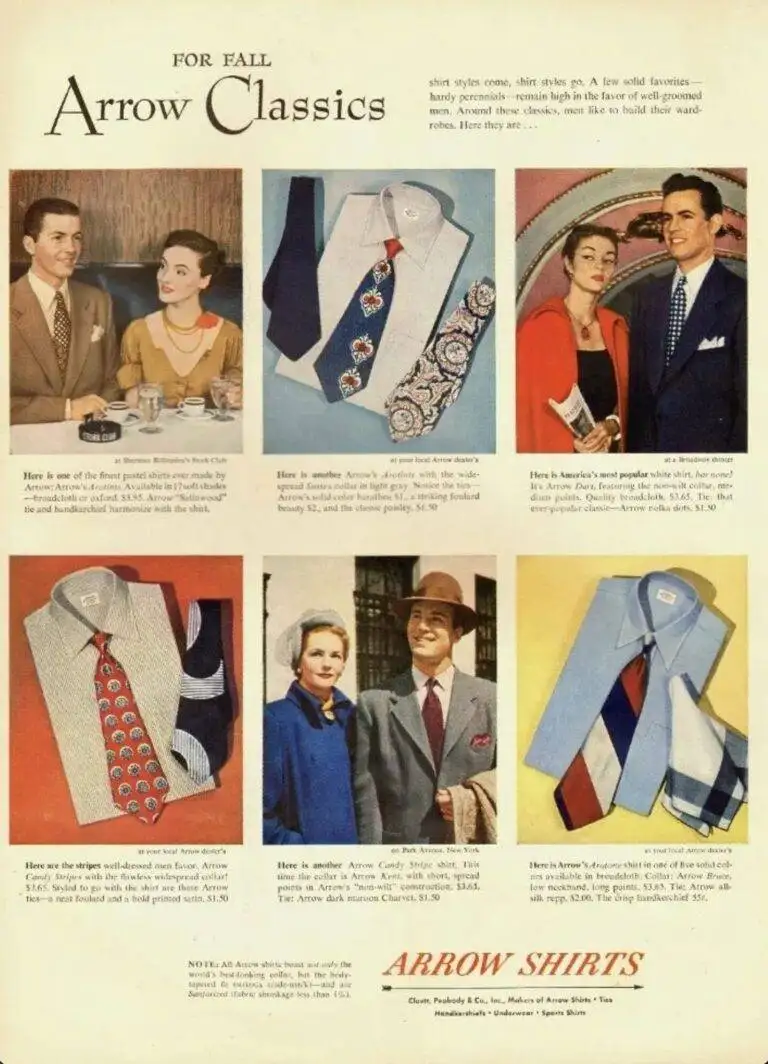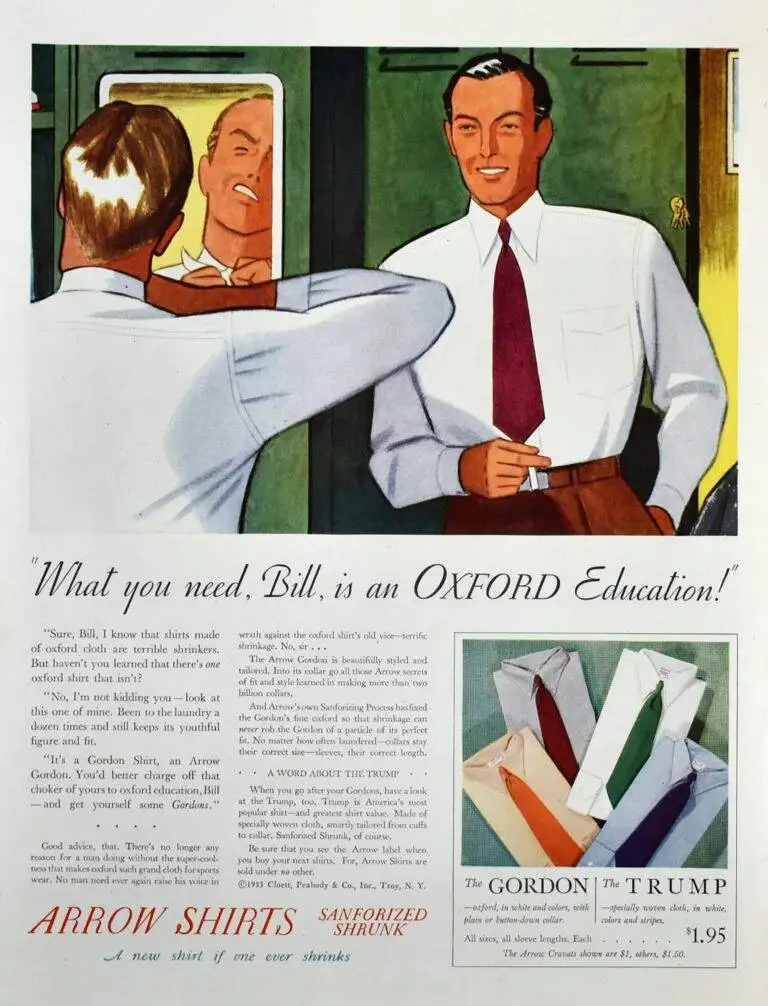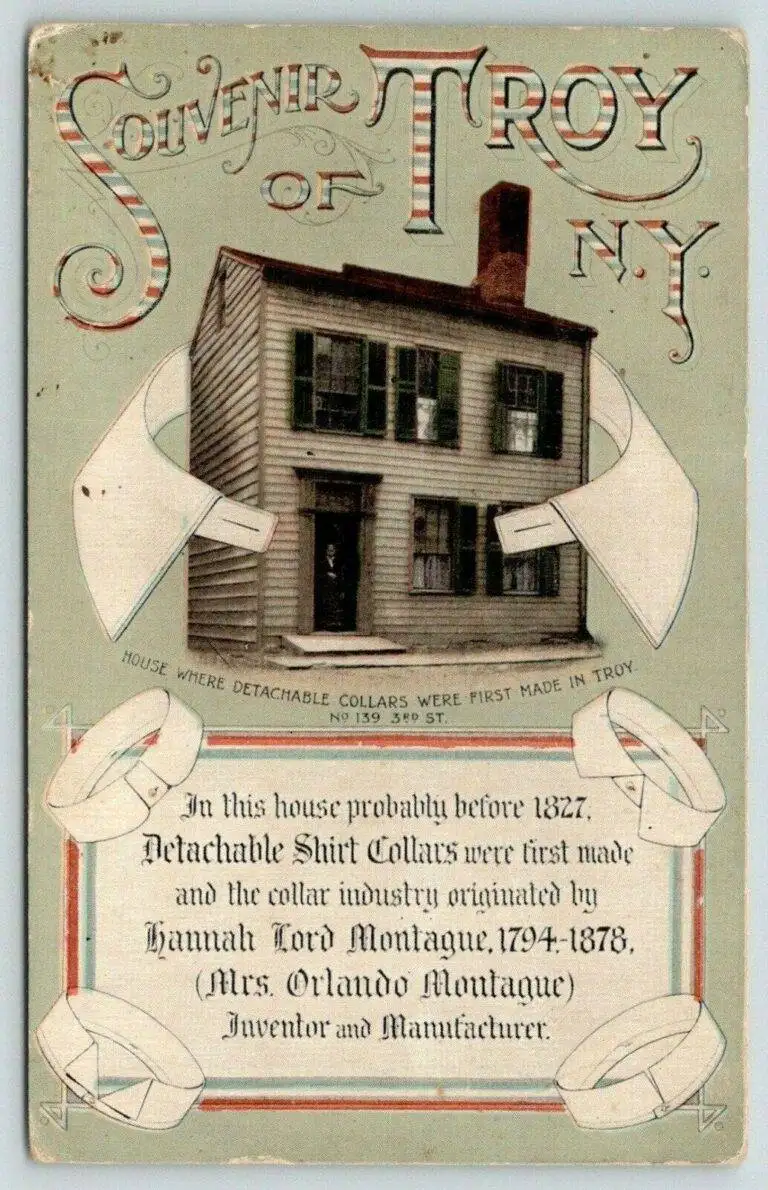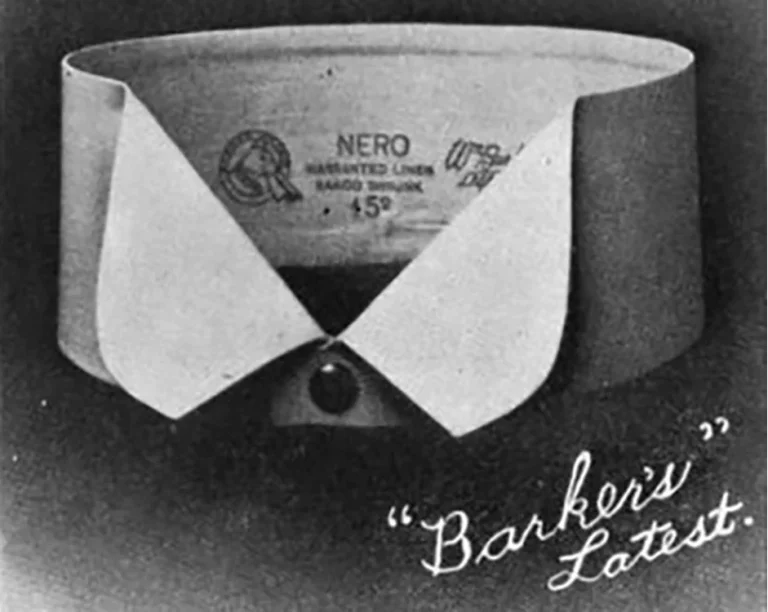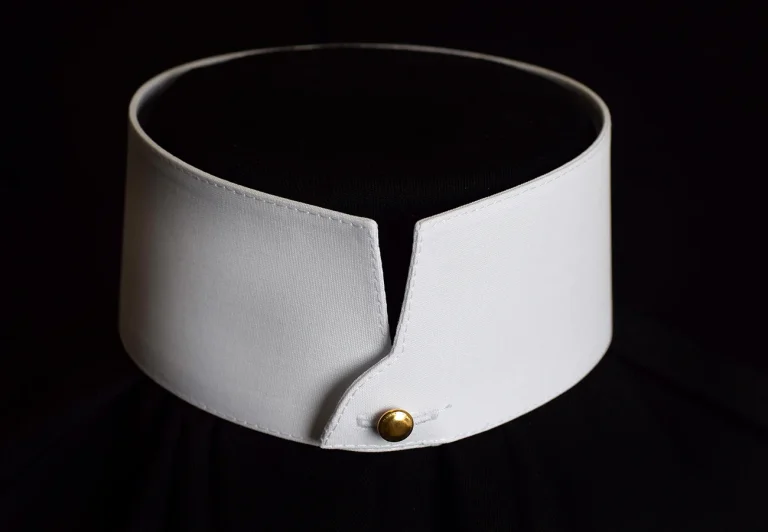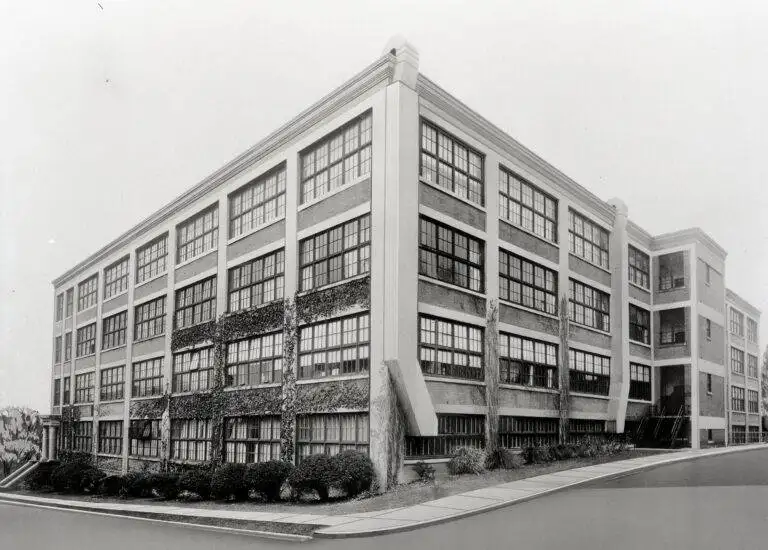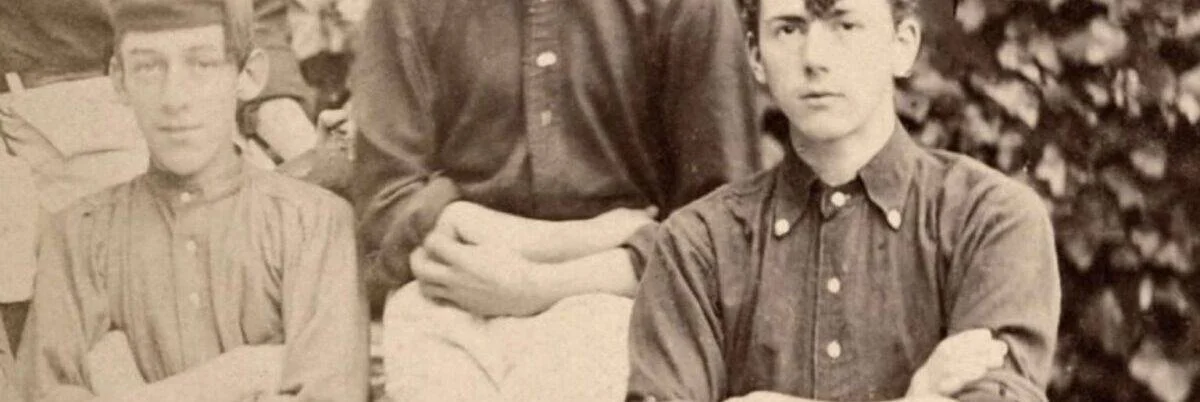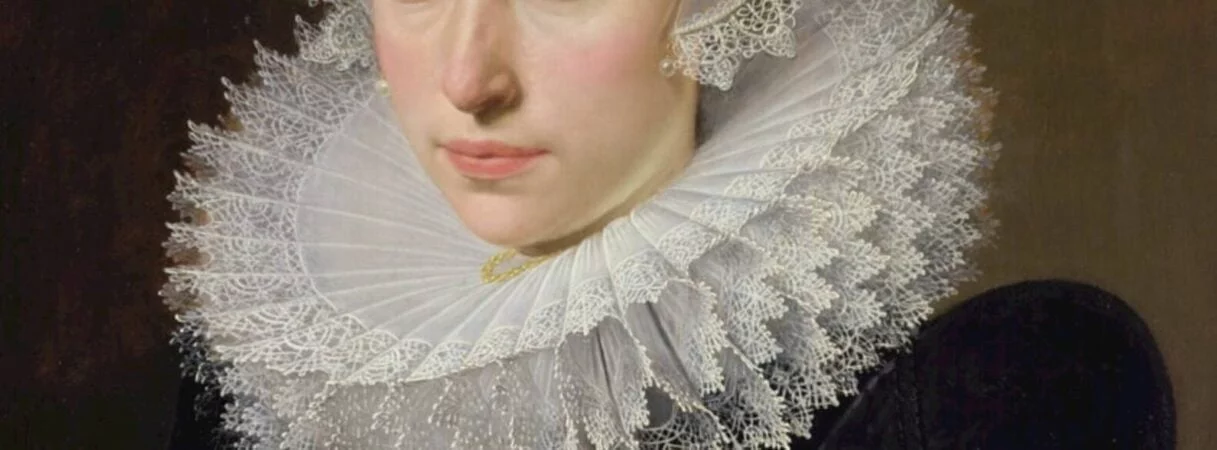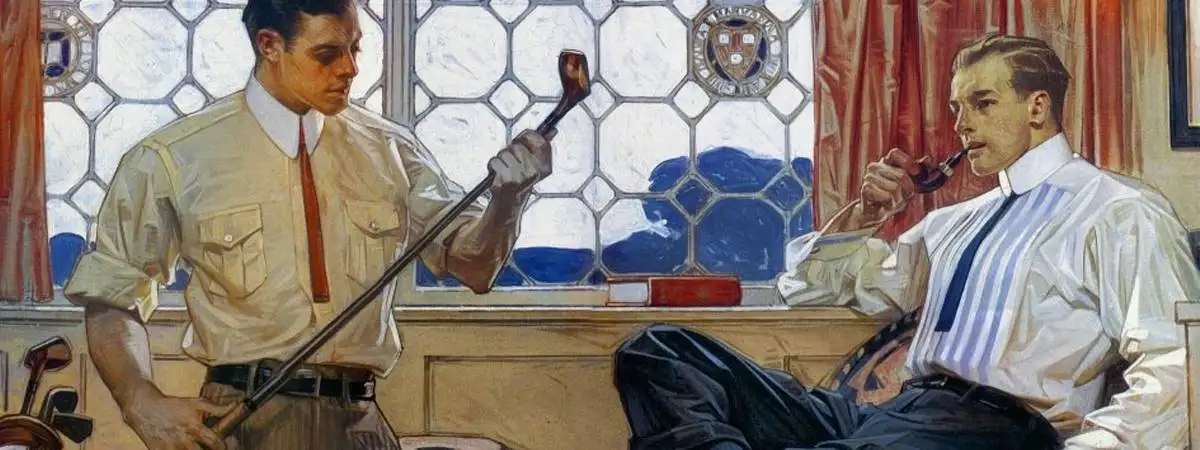
Troy : the Collar City
January – 2024 30 MINS READ
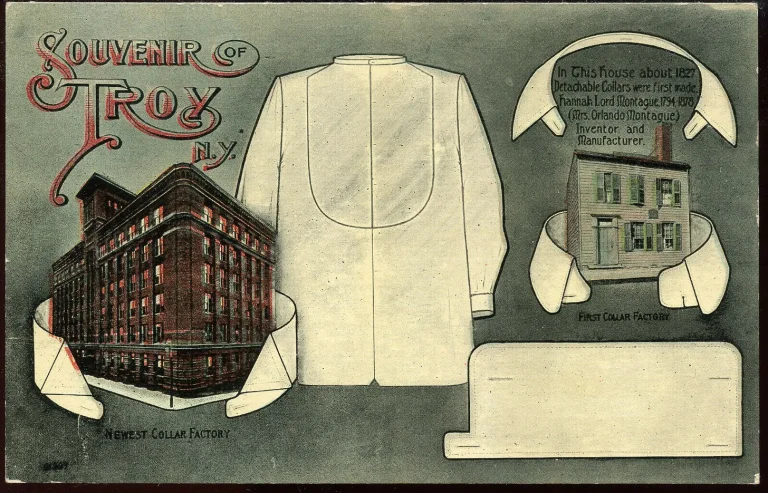
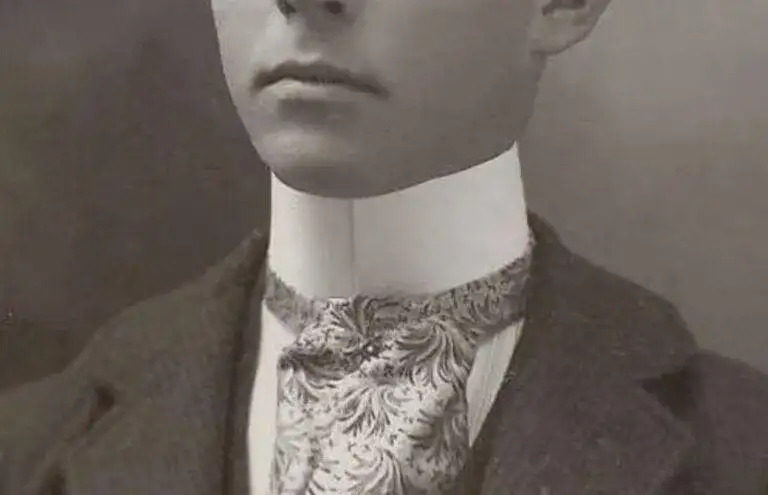

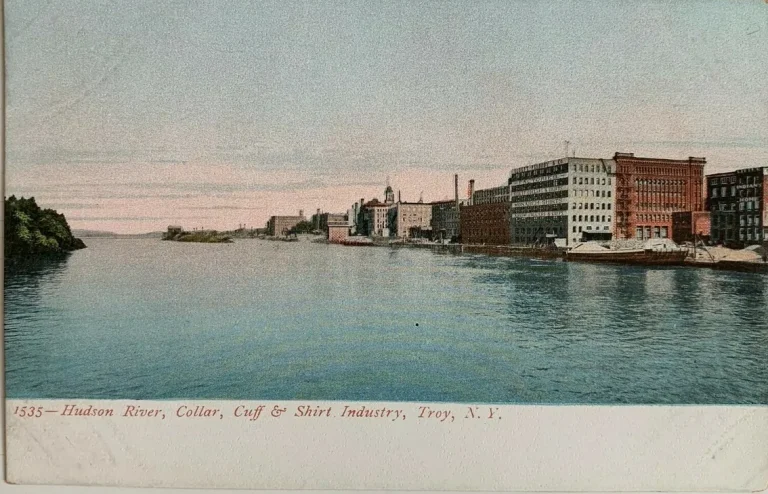
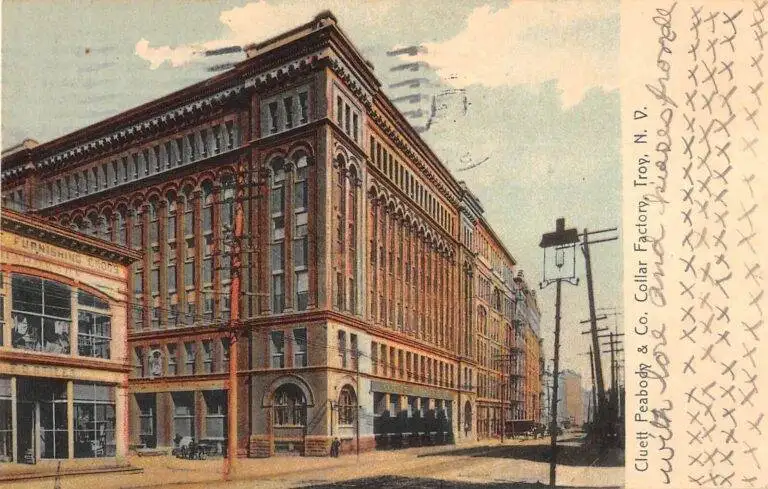
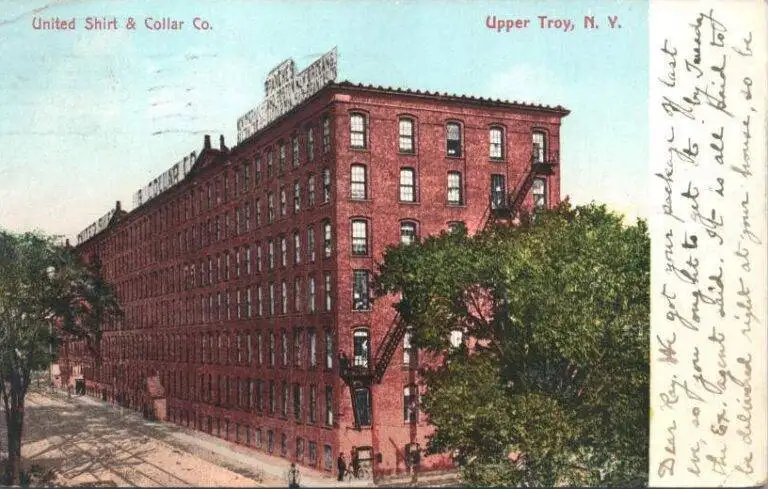
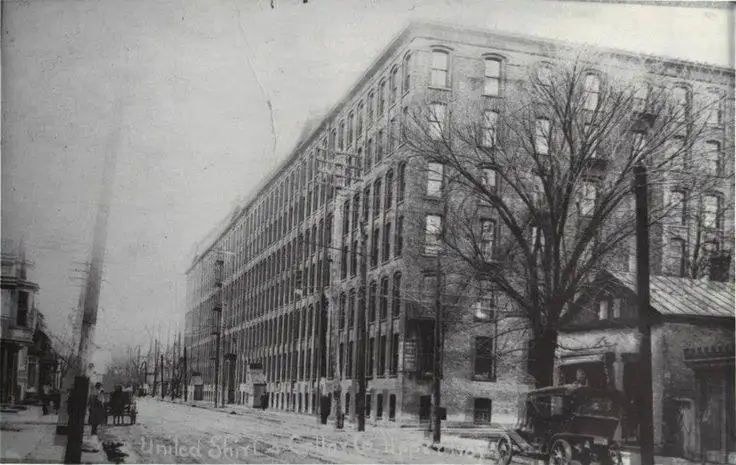
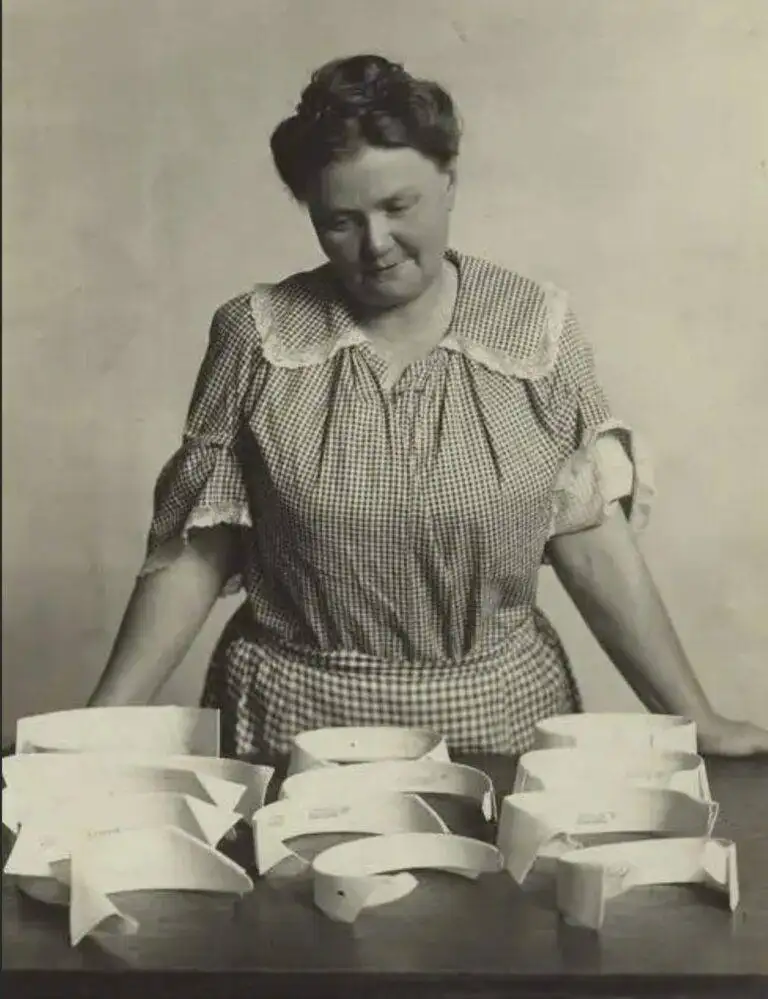
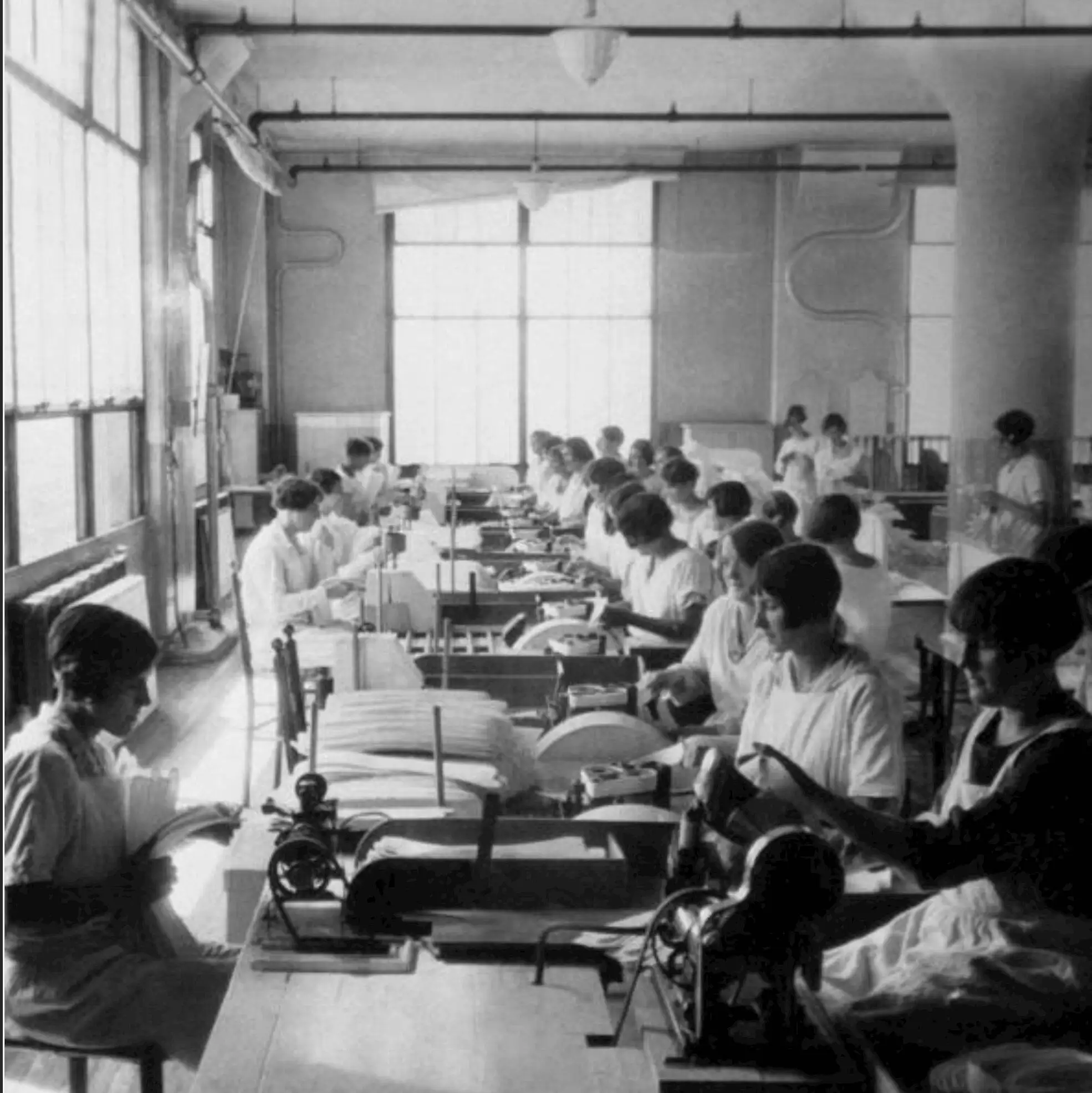

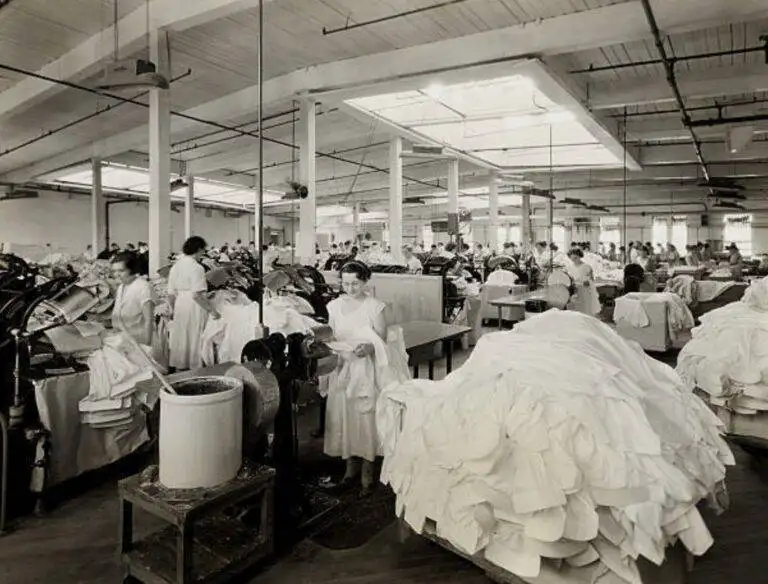

Sanford L. Cluett revolutionized the American fashion industry. His contribution significantly reduced issues like shrinking sleeves, tight waistlines, and popping buttons. His creation, the “Sanforized” fabric, ensured that clothes could be repeatedly washed without shrinking.
Born in 1874 in Troy, NY, Cluett was closely related to the founders of the city’s renowned detachable collar and shirt manufacturing company. However, he only joined the family business at the age of 45.
Cluett’s life was as diverse and fascinating as his relentless curiosity, which drove him to become an inventor with 200 patents to his name. He believed that curiosity and openness could lead to greater happiness and success. At the age of 10, he used a carpenter’s level, metal screw eyes, and a music stand to survey and map Raquette Lake in the Adirondack Mountains. During his teenage years, he lived in Florida due to poor health, where he hunted alligators, befriended the Seminoles and mastered their language, and became an expert marksman. After abandoning his initial ambition to pursue medicine, Cluett studied at Rensselaer Polytechnic Institute, focusing on ballistics research. He later served in the engineering corps during the Spanish-American War and contributed significantly to the engineering design of the Big Sandy River Dam project in Kentucky. By 27, he was the chief engineer at a harvesting machine company in upstate New York, where he developed new and improved designs.
Known for his meticulous nature, Cluett kept written records of all his thoughts. Anecdotes tell of him retrieving and notarizing a tablecloth on which he had sketched ideas during a business lunch, later using it as evidence in a patent lawsuit.
Cluett joined his uncles’ company in 1919, at a time when it was producing 3 million detachable collars weekly and shipping globally. However, as the 1920s progressed, the demand for soft collars attached to shirts rose, causing a decline in detachable collar sales. The company faced challenges transitioning to collar-attached shirts due to shrinkage issues. Cluett’s solution was to pre-shrink the shirts before sale.
He identified that fabric stretching during manufacturing caused shrinkage upon washing. His “compressive shrinkage process” soon became trademarked as “Sanforized.” Cluett Peabody & Co., Inc. licensed this process to the textile industry, ensuring garments would maintain their fit over time. This innovation propelled the company into a new era, transitioning from Arrow collars to Arrow shirts.
Sanford Cluett passed away in 1968 in Florida, leaving behind a legacy of innovation in the textile industry.
Step#1
Bales of unfinished cloth, called grey goods, arrive by truck or train from southern textile mills.
Step #2
Factory workers stitch the cloth into 14-mile-long strips in the griege, or grey room.
Step #3
High-speed rollers feed the cloth over gas flames to remove fuzz and protruding fibers.
Step #4
Ropes of loosely twisted cloth are cleaned in chemical baths to remove natural starches, fats, minerals, and grease. The cloth is then rinsed, spread out, and dried.
Step #5
The cloth is mercerized, or stretched under tension on frames and run through caustic soda and rinses to make it silky and lustrous.
Step #6
Machines called “mangles” squeeze the cloth dry. It is then steam-heat dried.
Step #7
The dried cloth is either dyed or directed to a padder, where finishing agents and blueing are added. Some of the cloth is calendered with highly polished rollers to create a surface that gleams.
Step #8
The cloth is Sanforized or preshrunk through a compression process.
Step #9
The lengths of cloth are folded, examined, and cut into webs.
Step #10
Goods are inspected and shipped to factories to be made into shirts.
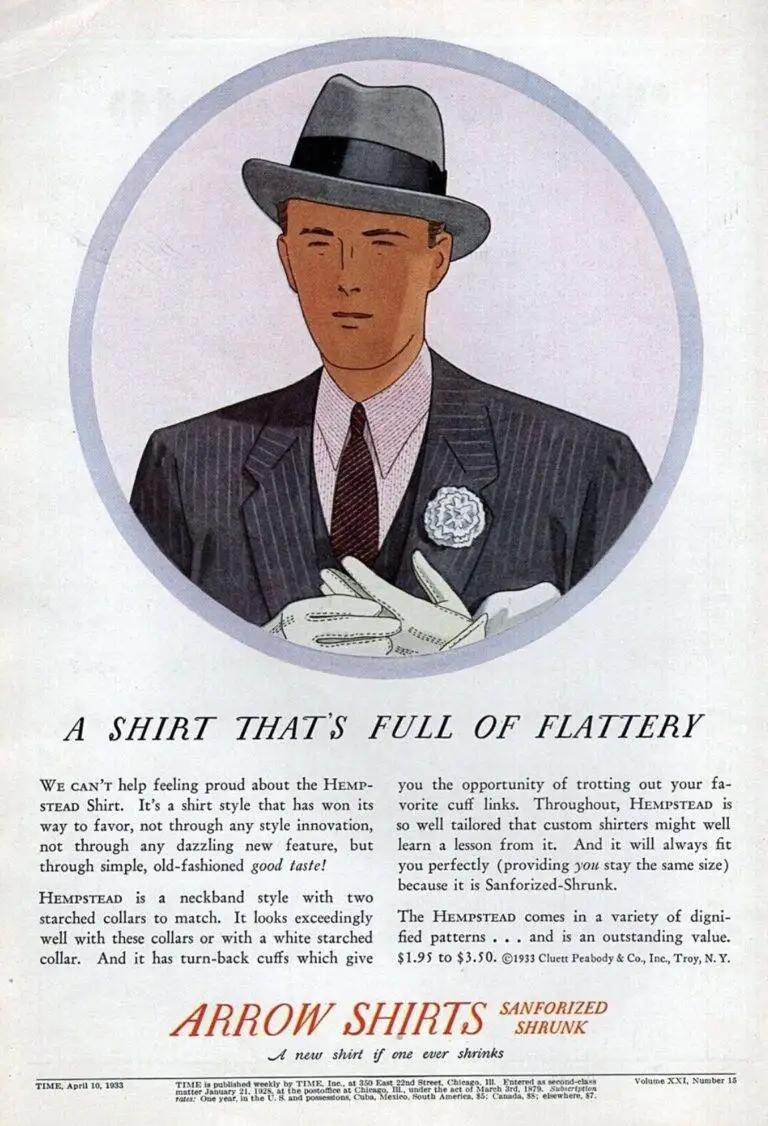
1933 Arrow Men’s Dress Shirts(Advertisements show “SANFORIED” from 1932.)
サンフォード・L・クルエットはアメリカのファッション業界を一新しました。彼の貢献により、縮む袖、締め付けられるウエストライン、はじけるボタンといった問題が大幅に減少しました。彼の発明である「サンフォライズド」生地は、衣服が縮まずに何度も洗濯できることを保証しました。
1874年にニューヨーク州トロイで生まれたクルエットは、同市の名高い取り外し可能な襟とシャツ製造会社を創業したクルエット家の甥でしたが、家業に加わったのは45歳になってからでした。彼の人生は多岐にわたり、彼の不屈の好奇心が、彼を200件の特許を持つ発明家へと導きました。彼は好奇心を持ち、心と耳と目を開いていれば、人々はもっと幸せで、偶然にももっと成功するだろうと信じていました。10歳の時、彼は大工の水準器、金属製のねじ目、楽譜スタンドを使って、アディロンダック山脈のラケット湖を調査し地図を作成しました。十代の間、彼は健康上の理由でフロリダに数年間住んでおり、その間にワニ狩りをし、セミノール族と友達になり、彼らの言語を習得し、射撃の名手となりました。医学のキャリアを目指す夢を諦めた後、彼はレンセラー工科大学で学び、弾道学の研究に先駆けて取り組みました。卒業後、彼はスペイン・アメリカ戦争で工兵隊に参加し、ケンタッキー州のビッグ・サンディ・リバー・ダム計画の重要な設計作業を行いました。27歳で、ニューヨーク州北部の収穫機械会社の主任技術者となり、新しく改良されたデザインを発明しました。クルエットは細部にこだわり、思いついたことをすべて書面に残すことで有名でした。ある話によると、彼はビジネスランチでの発明について話していた後、自分が描いたアイデアを含むテーブルクロスを取りに戻り、公証人に証明させて保管したそうです。後に、特許訴訟の証拠として使用されました。
1919年にクルエットは叔父たちの会社に加わりました。当時、トロイの工場は週に300万枚の取り外し可能な襟を生産し、世界中に出荷していました。しかし、1920年代になると、人々はシャツに付いた柔らかい襟に慣れ、取り外し可能な襟の販売は急落しました。会社は襟付きシャツに参入しようとしましたが、洗濯時の縮みという欠陥に直面しました。誰も洗濯済みのシャツを買いたがりませんでした。クルエットは、洗濯前にシャツを縮める方法を見つける必要がありました。彼は、製造過程での生地の伸びが縮みの原因であると結論付けました。洗濯すると生地は元の状態に戻ります。彼は「圧縮縮小プロセス」という技術を開発し、間もなくその発明者の名を取って「サンフォライズド」という商標で呼ばれるようになりました。クルエット・ピーボディ&カンパニー社はこのプロセスをライセンスし、繊維業界全体に提供しました。突然、人々は購入した衣服が所有している限りサイズが変わらないことを確信できるようになりました。以前は新しい服を合わせるのはほとんど推測の域を出ませんでした。唯一の確実性は衣服が縮むことでした。この革新は、「クルエット・ピーボディ&カンパニー社」をアローシャツに置き換わる新時代へと導きました。
サンフォード・クルエットは1968年にフロリダで亡くなりました。
ステップ#1
南部の繊維工場からトラックや列車で未完成の布、いわゆるグレー・グッズ(灰色商品)が到着します。
ステップ #2
工場の作業員が布をグリージュ(灰色部屋)で14マイル長のストリップに縫い合わせます。
ステップ #3
高速ローラーが布をガス炎の上に送り、糸くずや突出した繊維を除去します。
ステップ #4
緩く捻じれた布のロープは、天然のでんぷん、脂肪、ミネラル、グリースを取り除くために化学浴で洗浄されます。その後、布はすすがれ、広げて乾燥させられます。
ステップ #5
布はマーサライズ処理、つまりフレームに張られてテンションをかけながら苛性ソーダとすすぎを通して、シルクのような光沢を与えます。
ステップ #6
「マングル」と呼ばれる機械が布を絞って乾かします。その後、蒸気熱で乾燥させます。
ステップ #7
乾燥した布は、染色されるか、仕上げ剤とブルーイングを加えるパッダーへ送られます。一部の布は高度に磨かれたローラーでカレンダー処理され、光沢のある表面を作り出します。
ステップ #8
布は圧縮プロセスを通じてサンフォライズ処理、または予縮加工されます。
ステップ #9
布の長さは折りたたまれ、検査され、ウェブに切り分けられます。
ステップ #10
商品は検査され、シャツ製造のために工場に出荷されます。
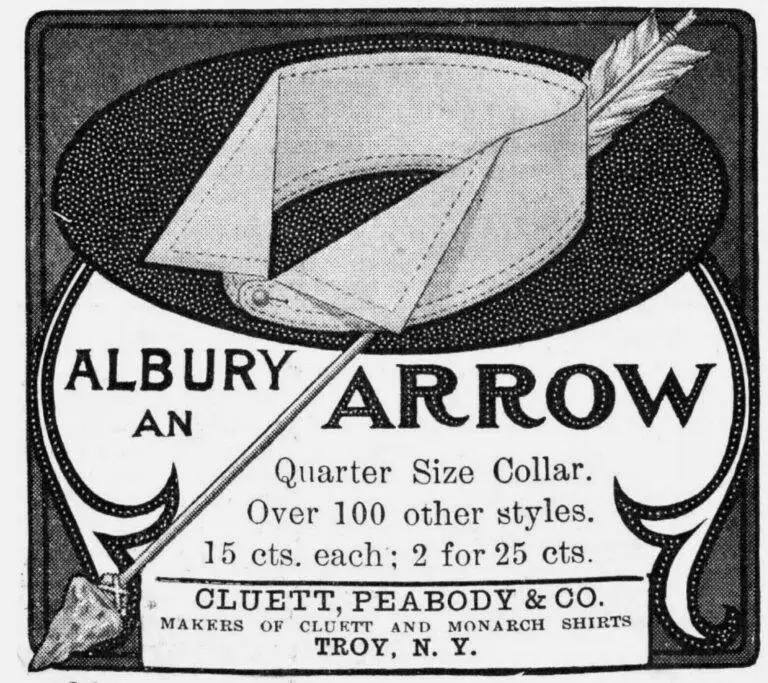
1905 Arrow Men’s Dress Shirts
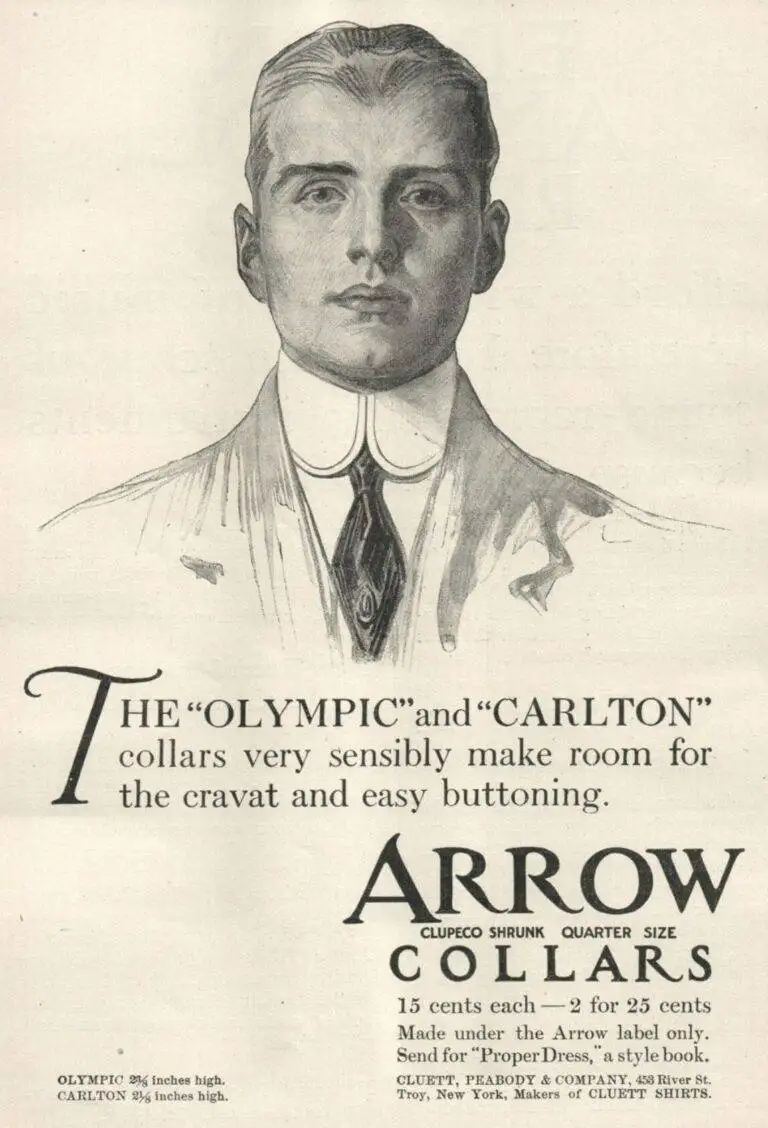
1908 Cluett Peabody Arrow Men’s Collar Shirt Handsome Man
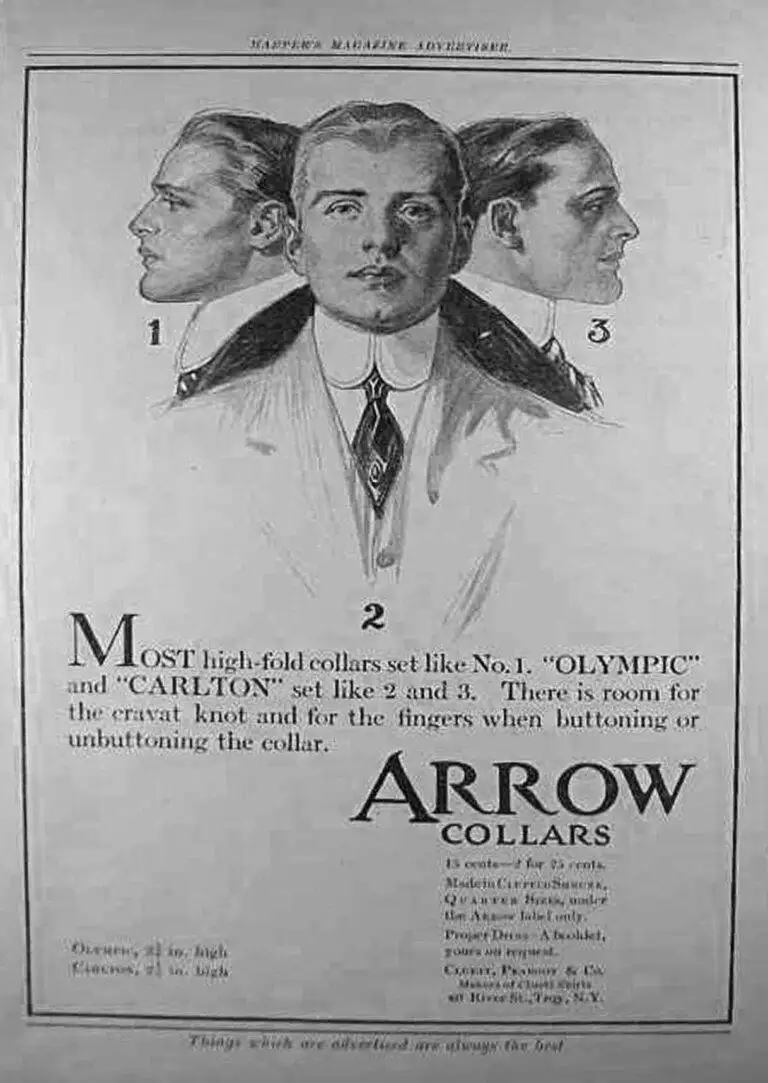
1908 Arrow Collars Ad
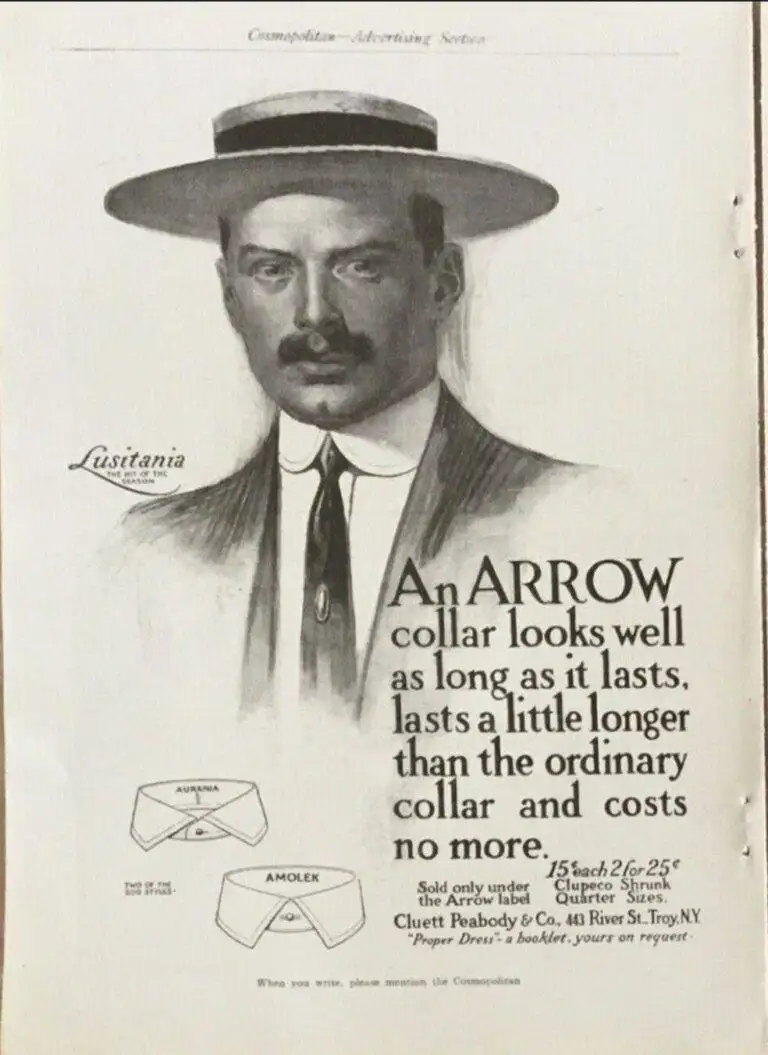
1908 Arrow Collars Ad
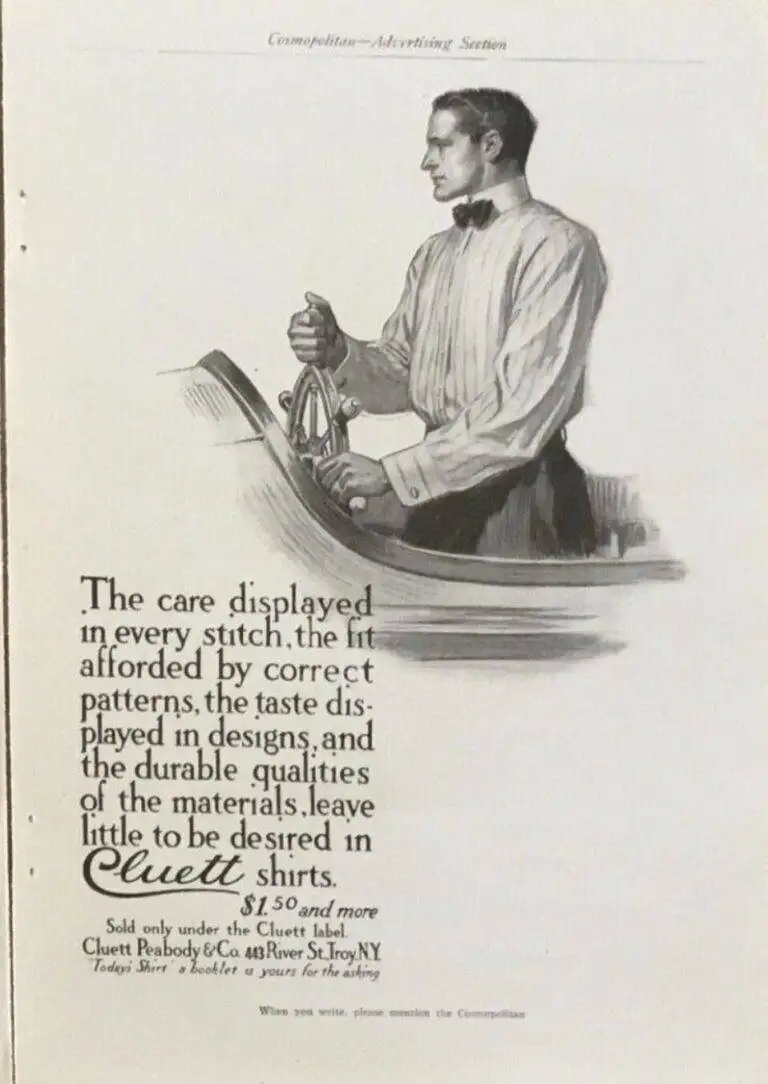
1908 Arrow Collars Ad
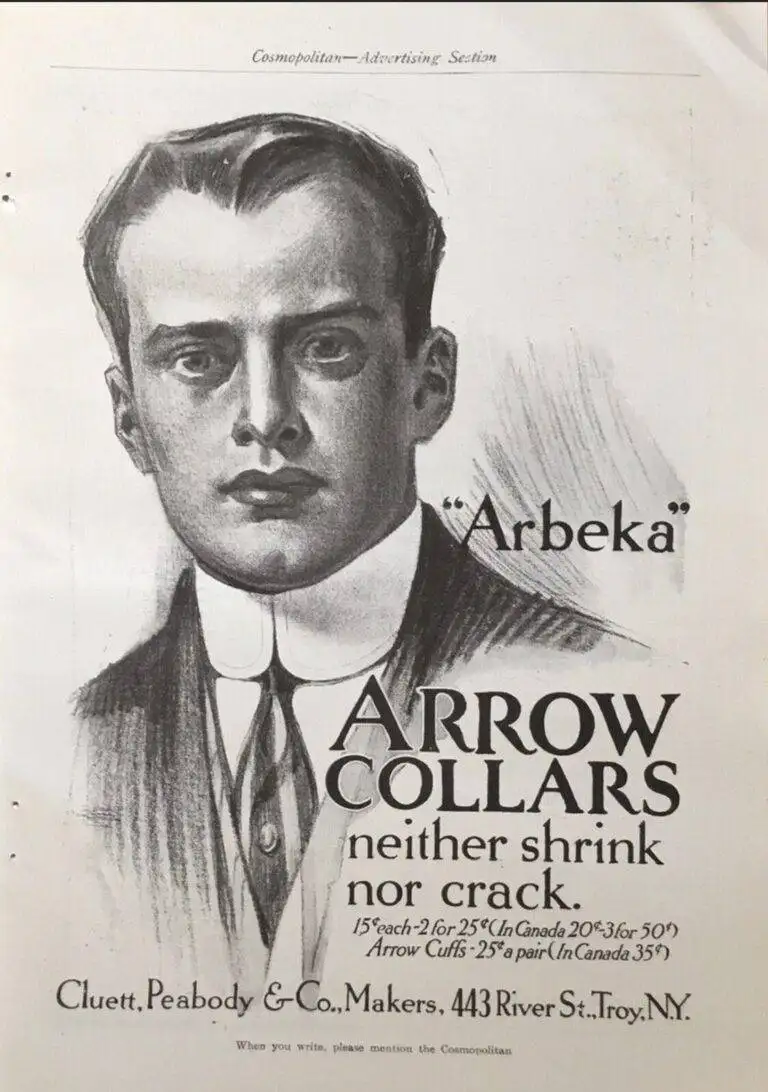
Arrow shirt collars print ad 1909
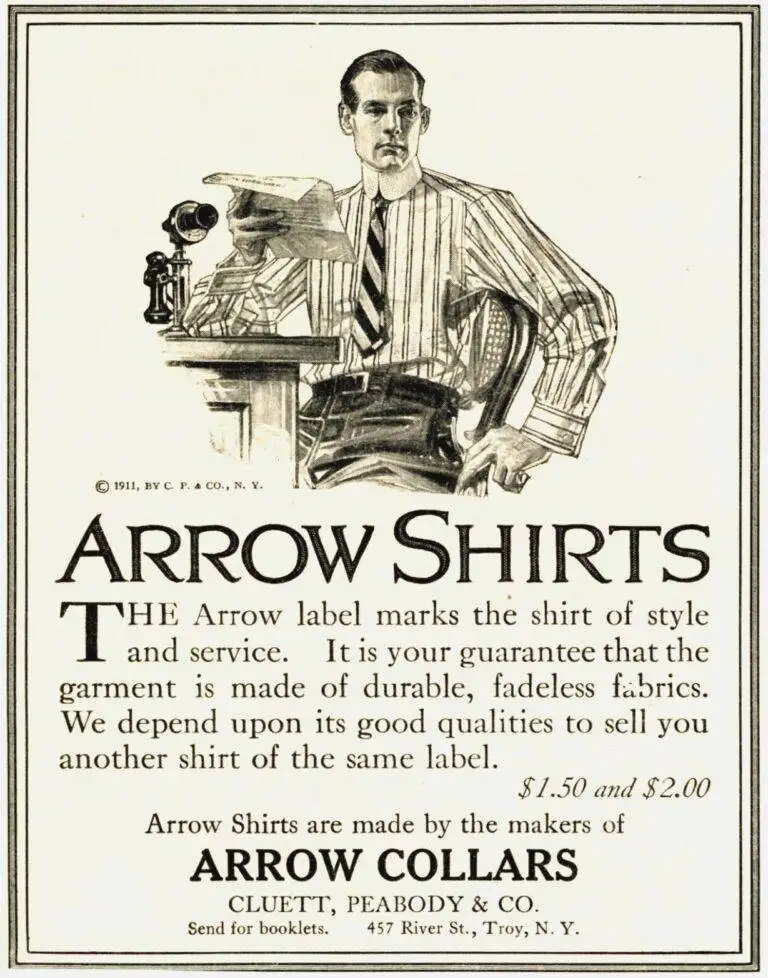
1912 Original Arrow Shirts
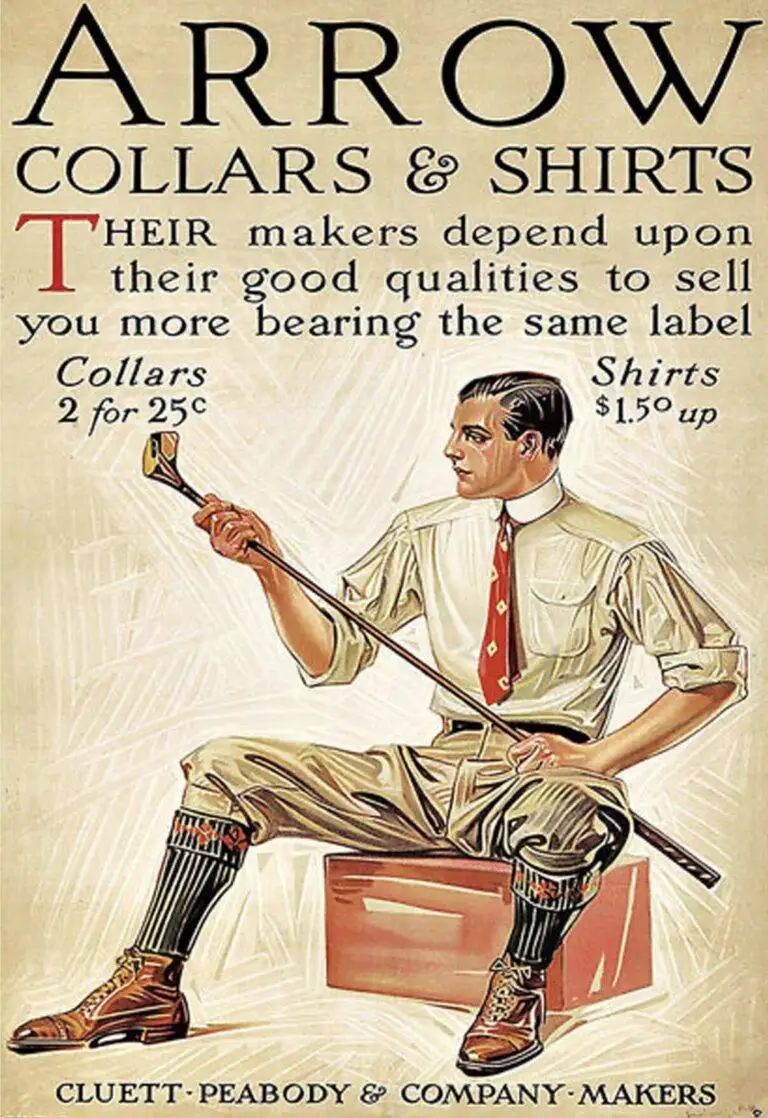
Arrow Collars and Shirts 1912
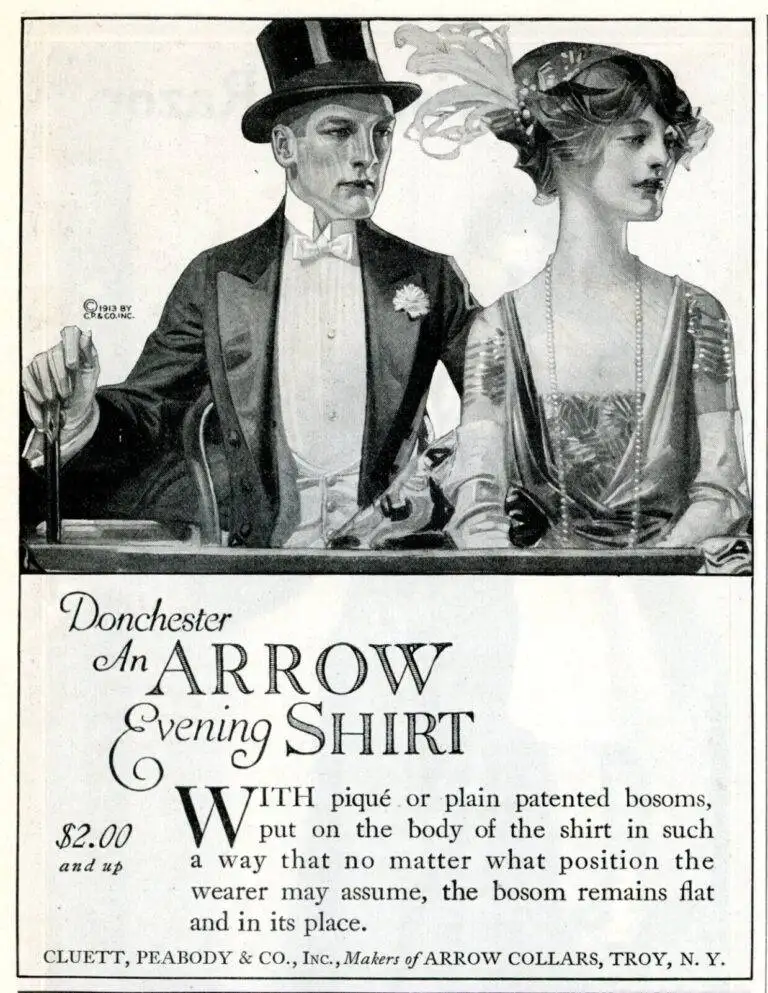
1913 Original Arrow Evening Shirts Ad
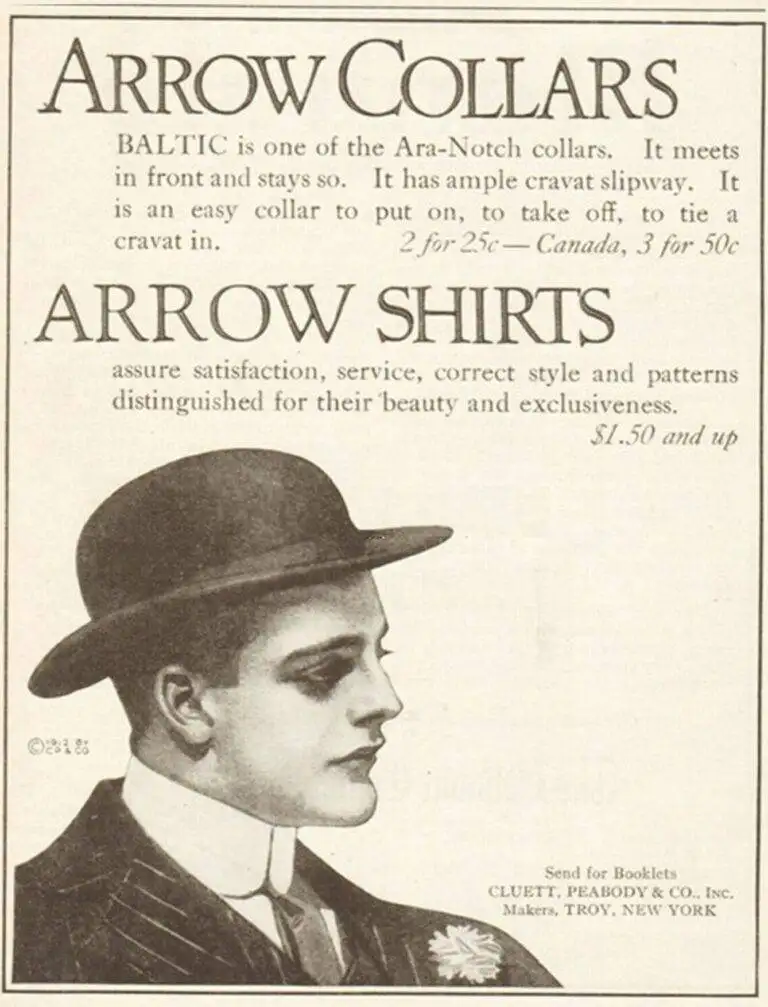
1913 Arrow Collars and Shirts Cluett & Peabody Antique Original Print
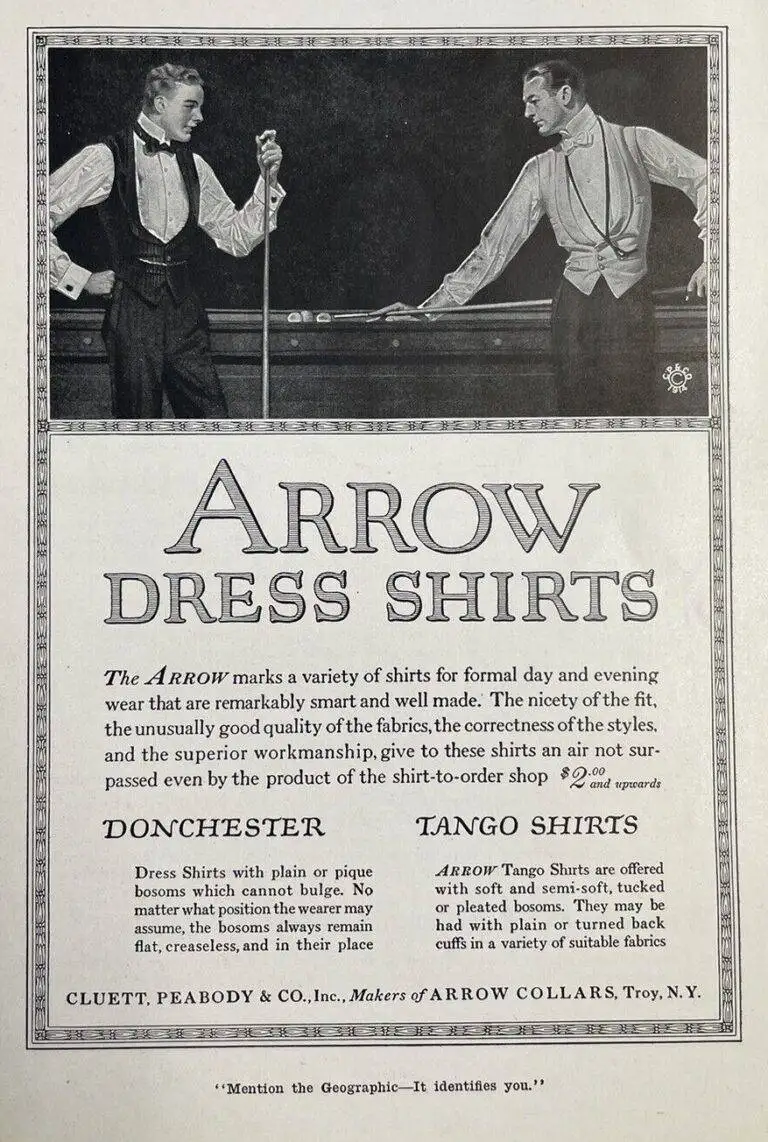
1914 Arrow Dress Shirts
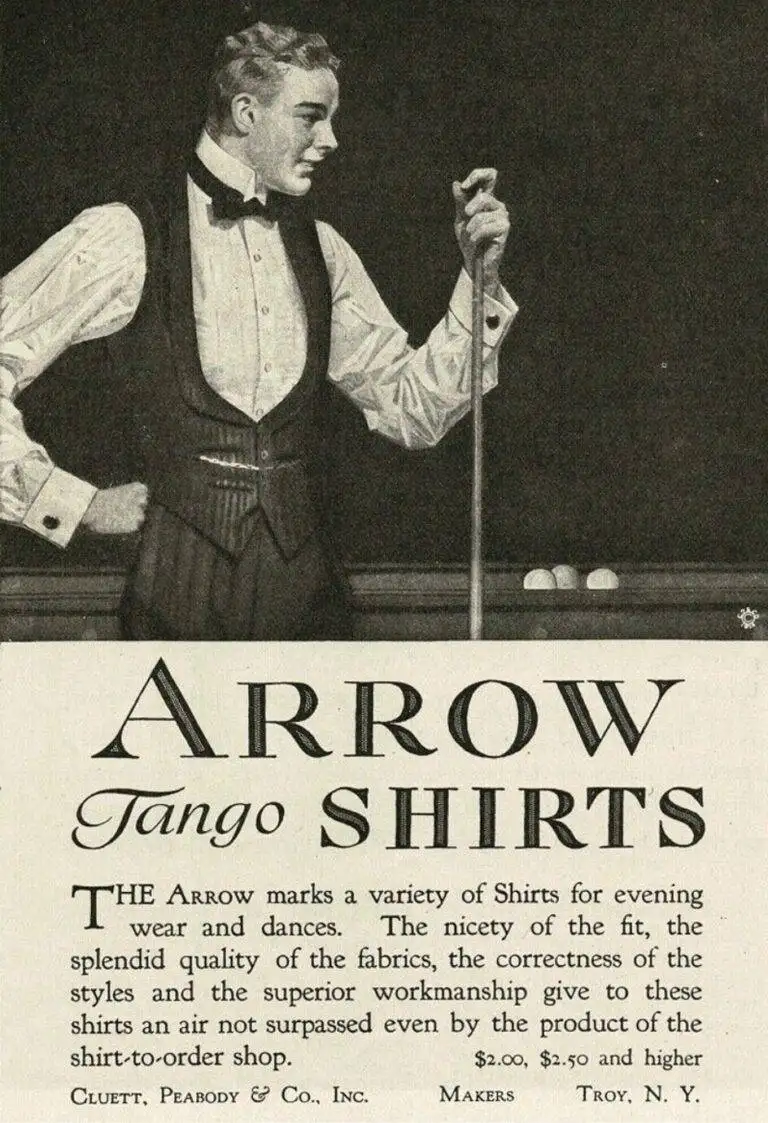
1914 ARROW Tango Shirts
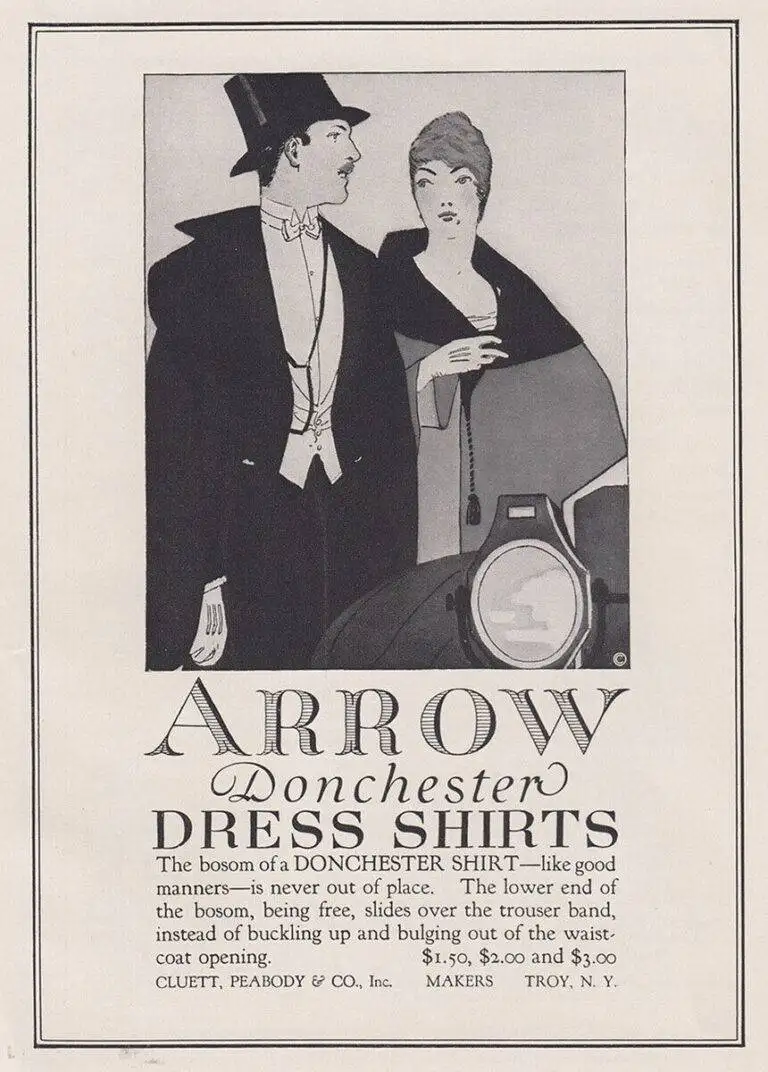
1915 Arrow: Donchester Dress Shirts
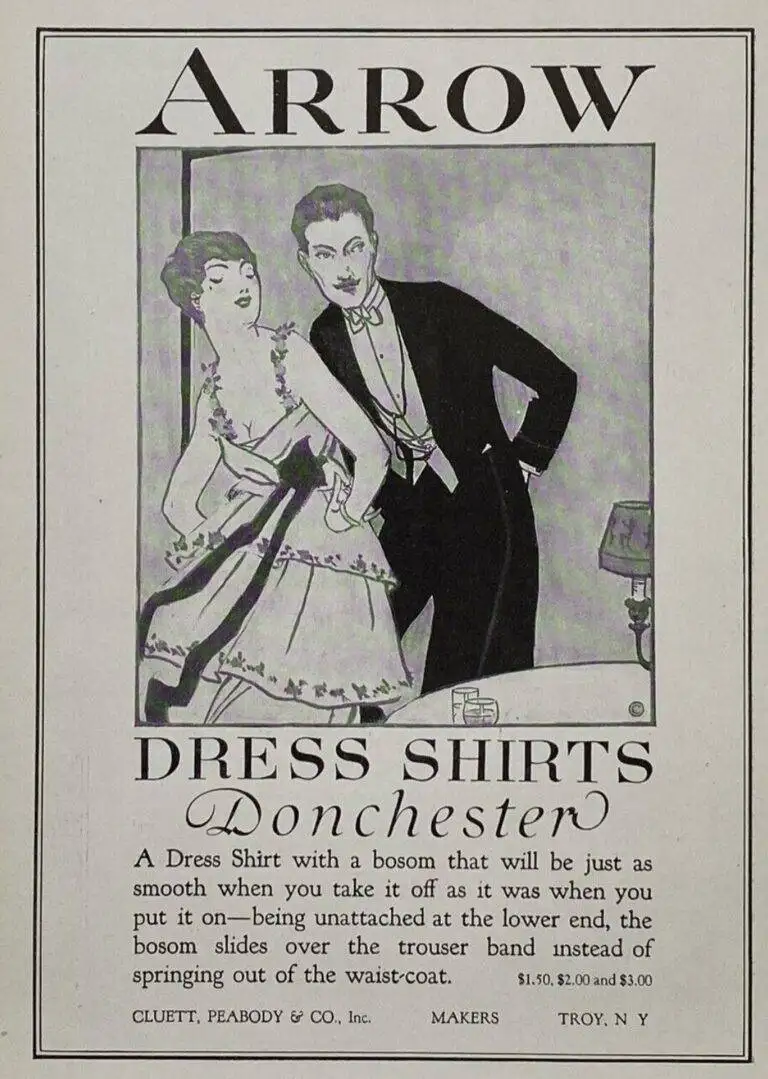
1915 Arrow Donchester Dress Shirts
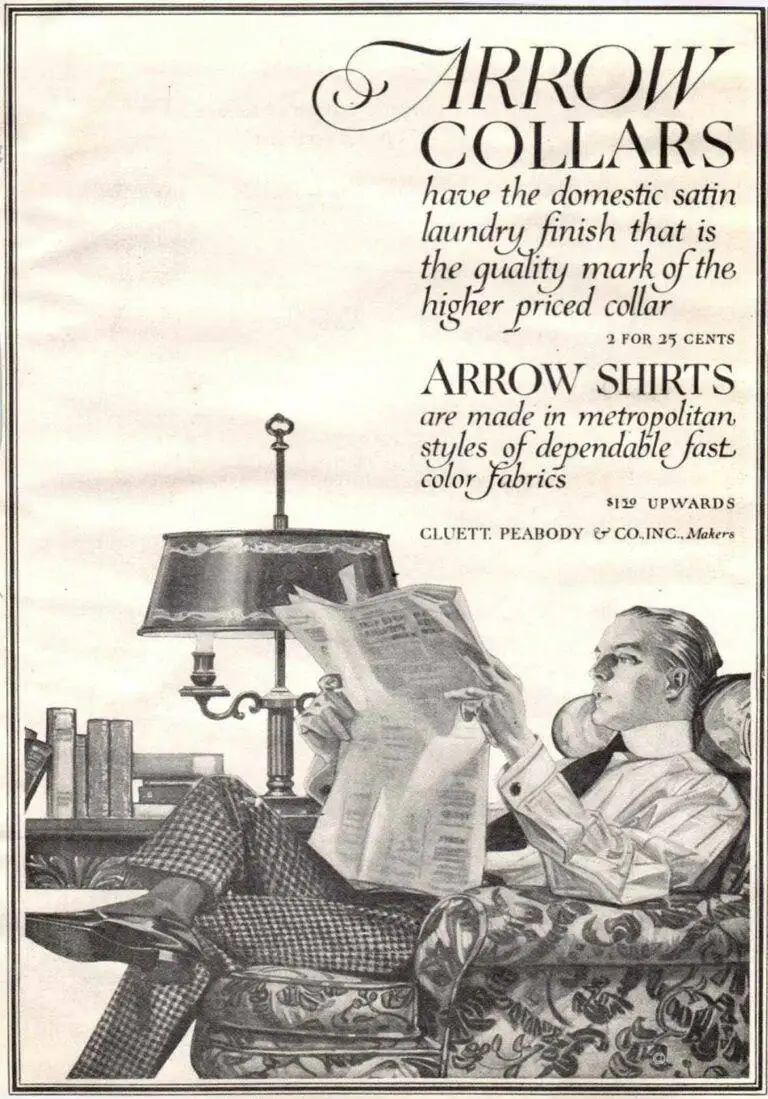
1915 Arrow Shirt Collars
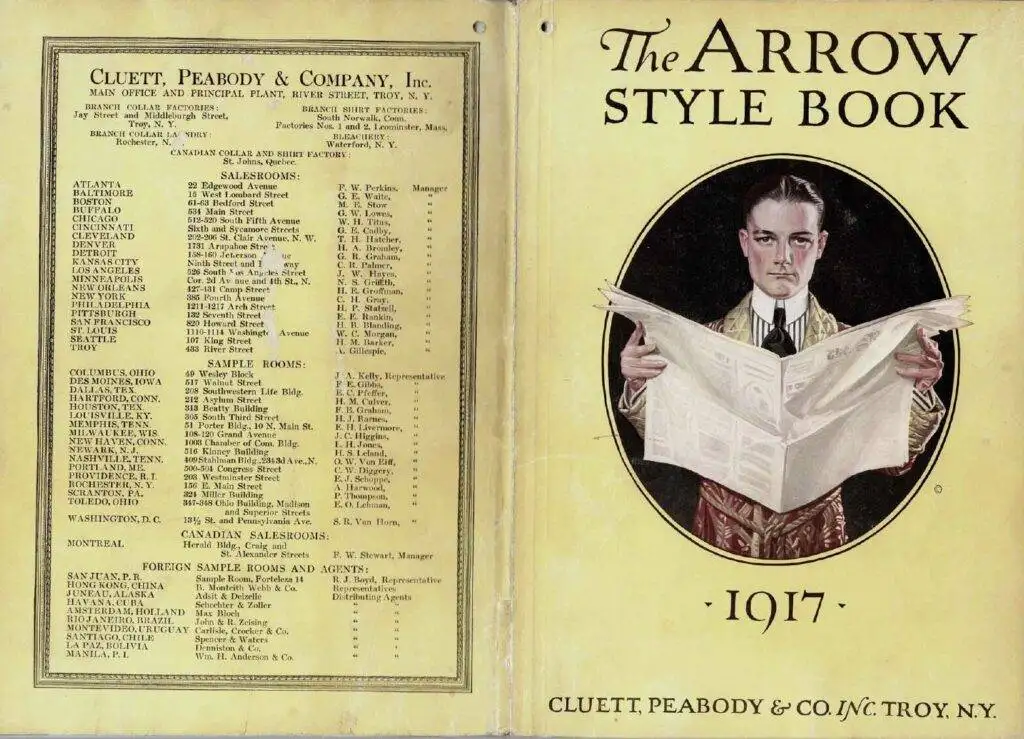
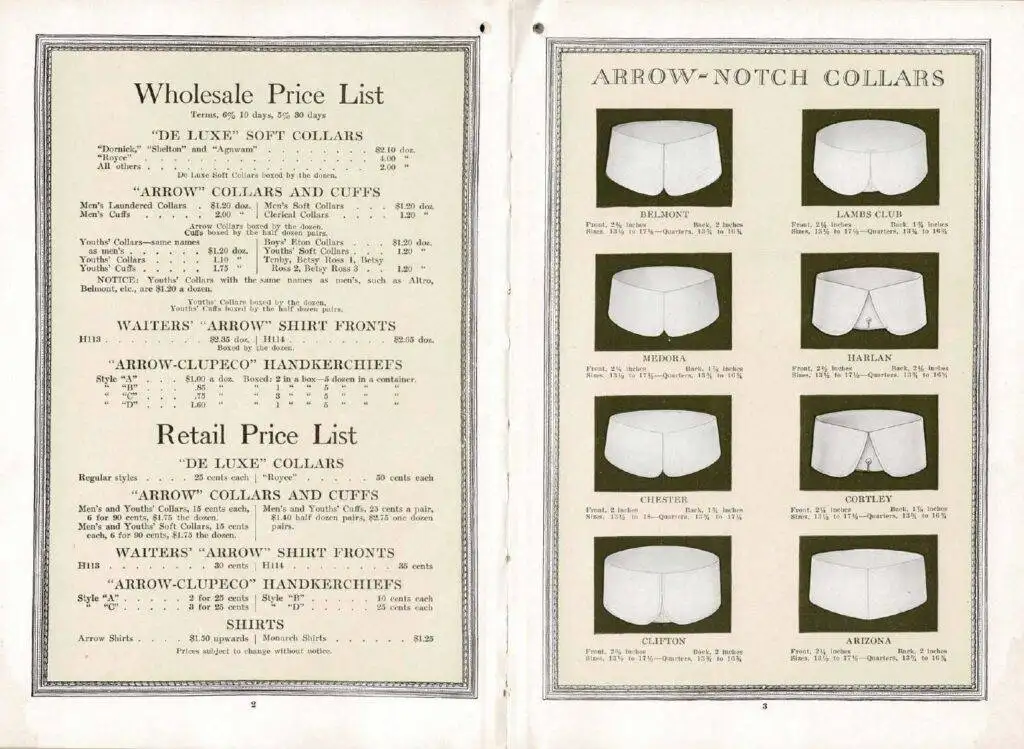
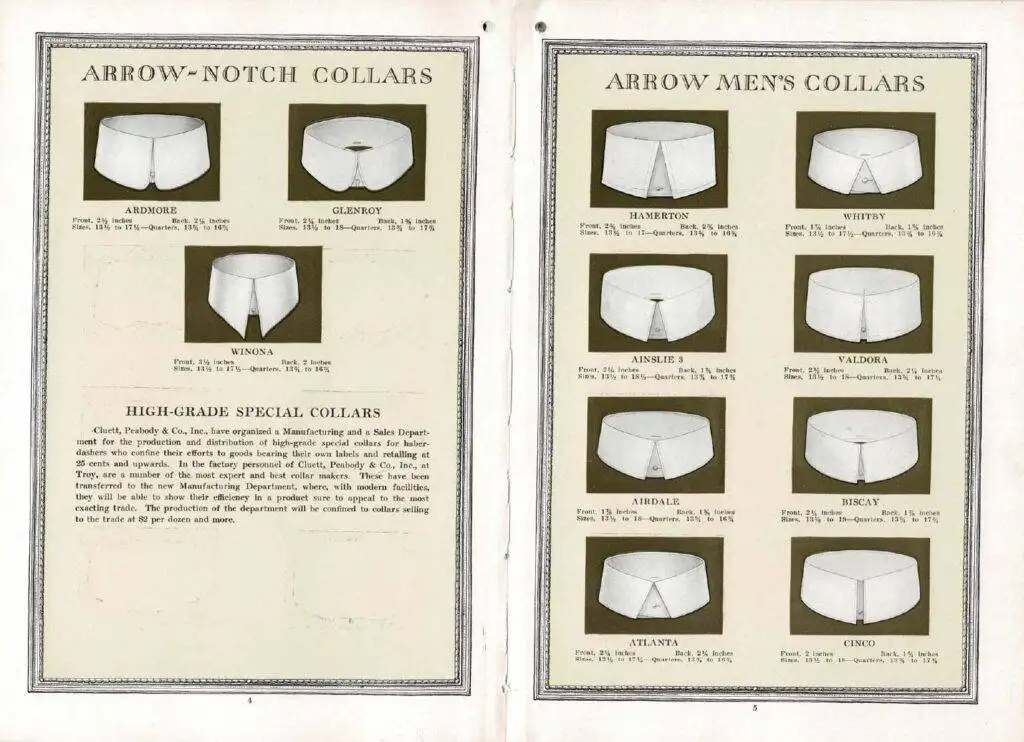
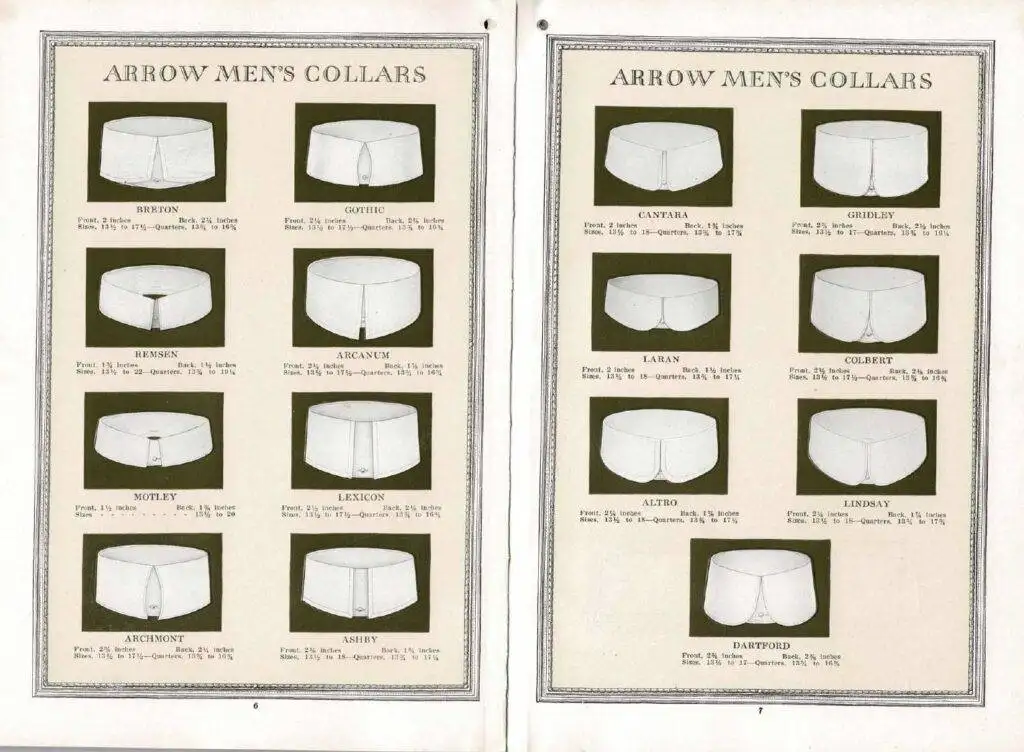
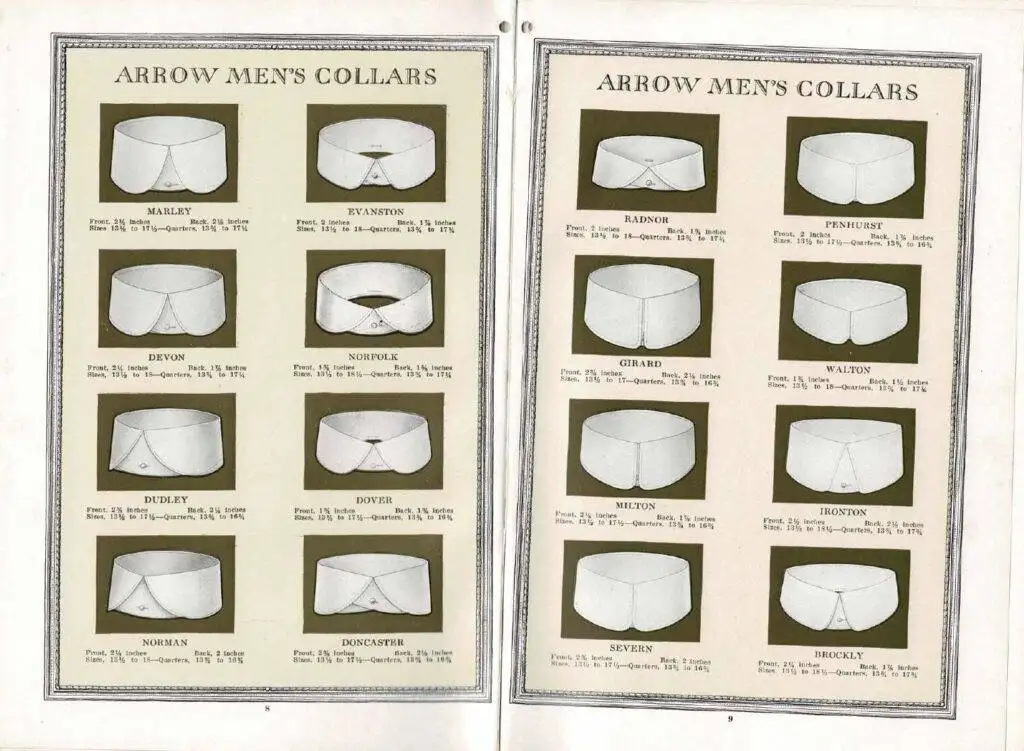
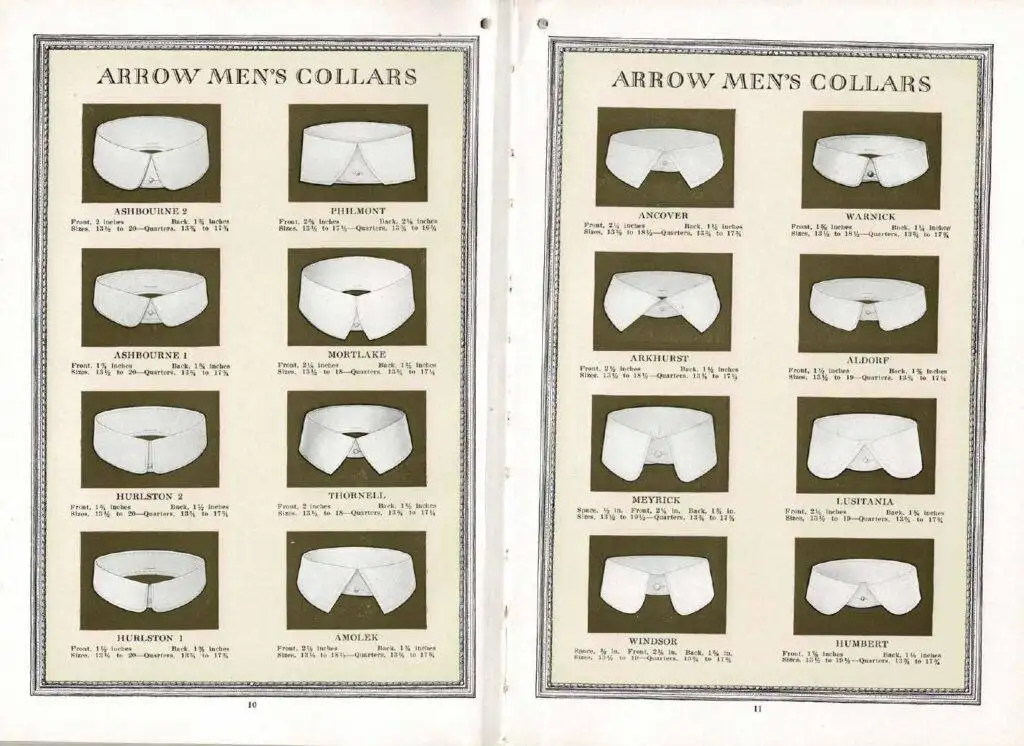
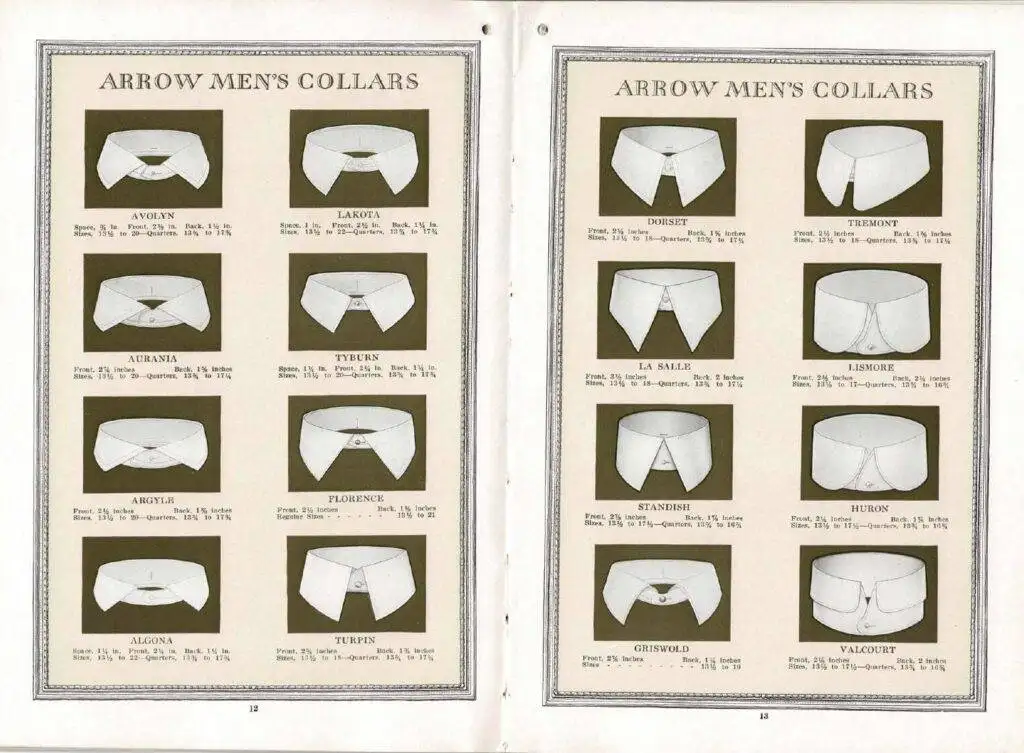
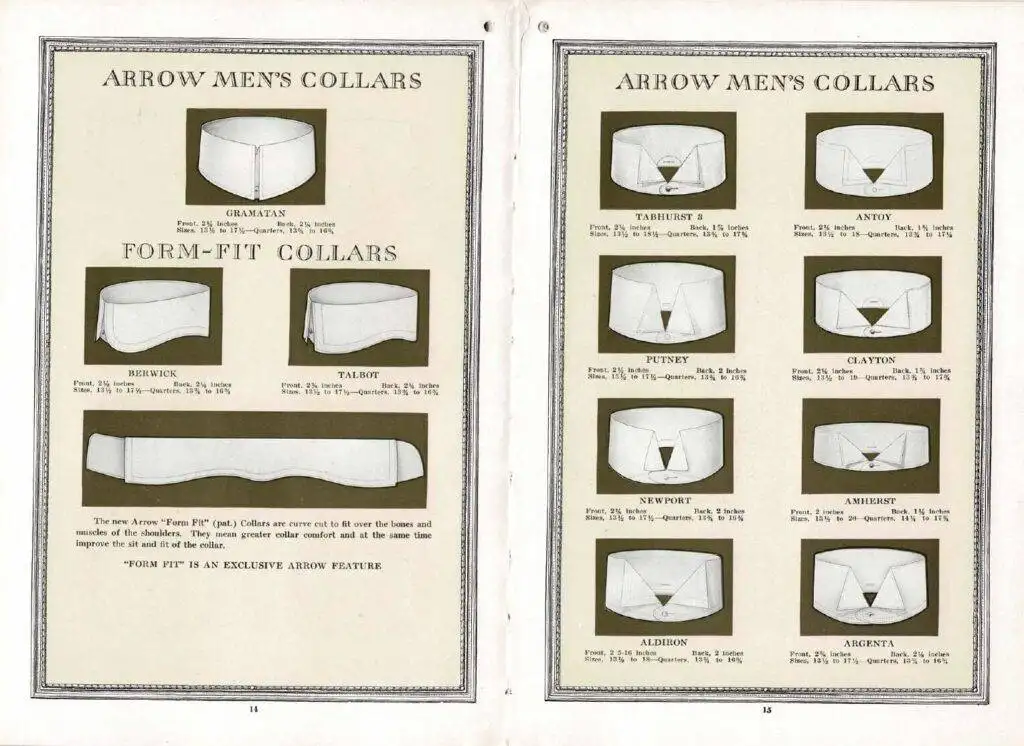
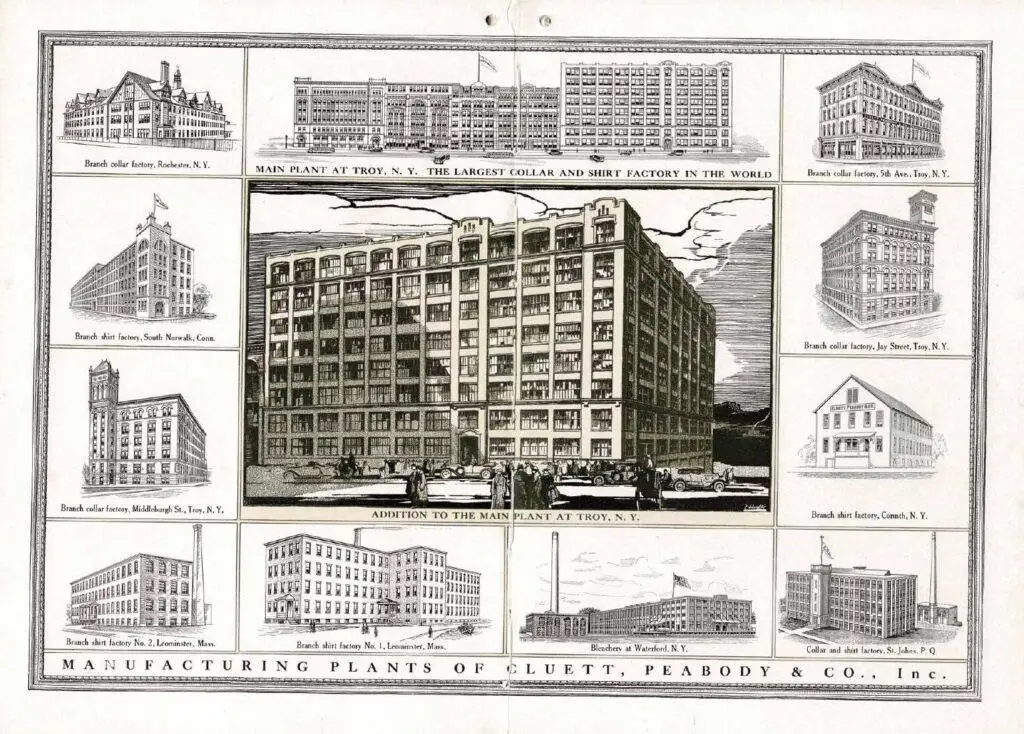
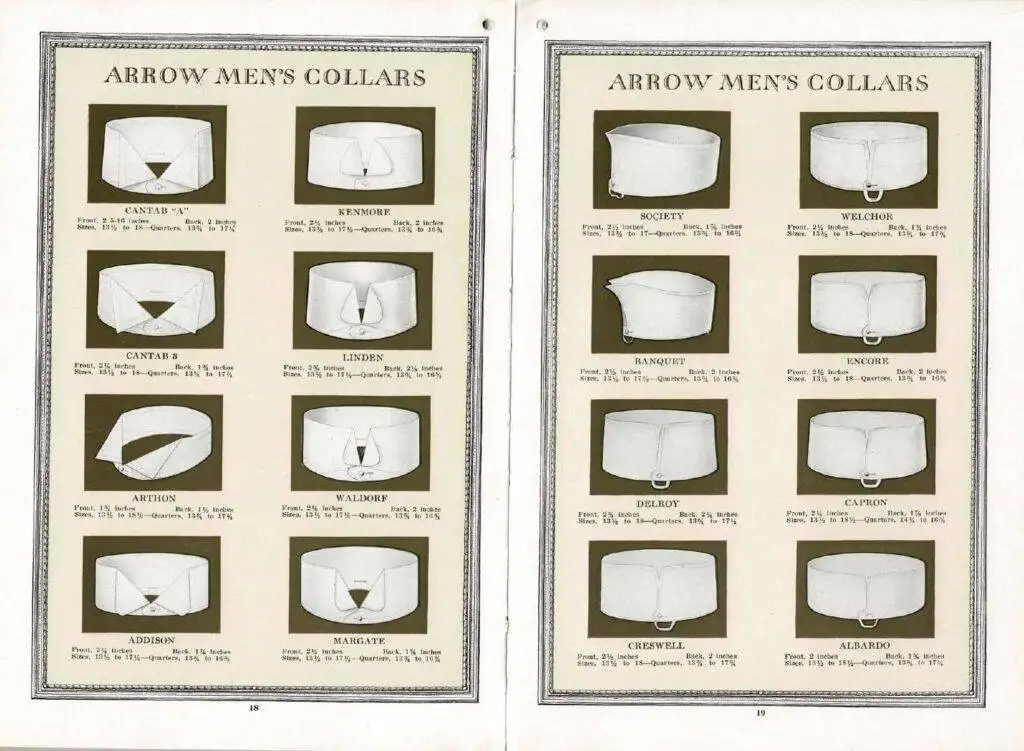





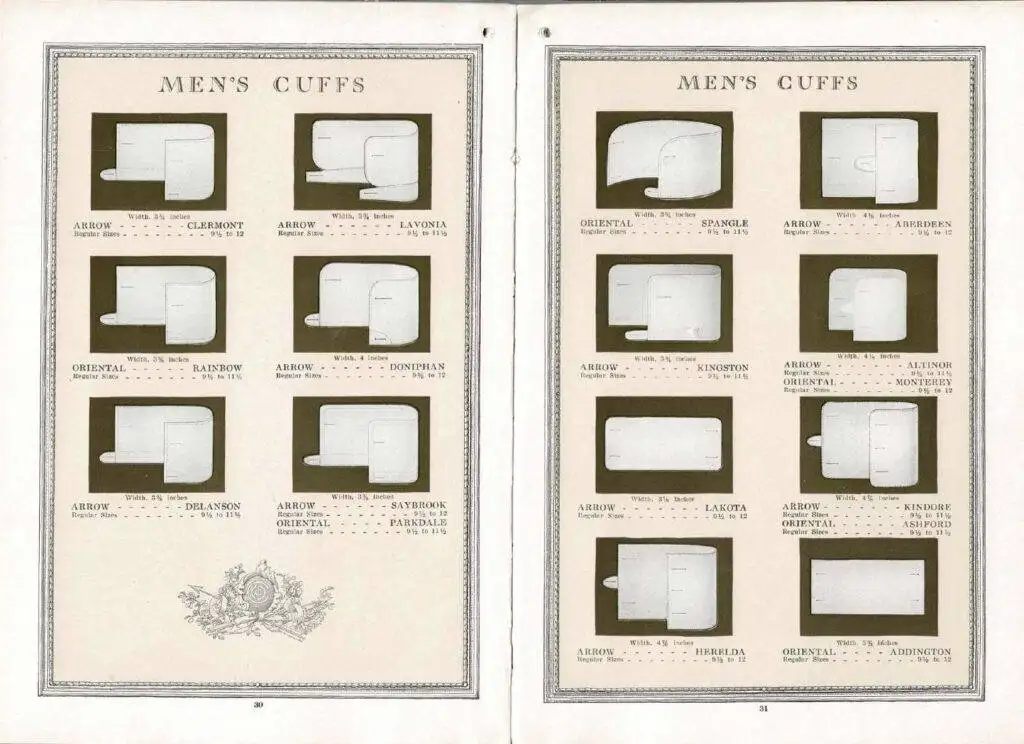
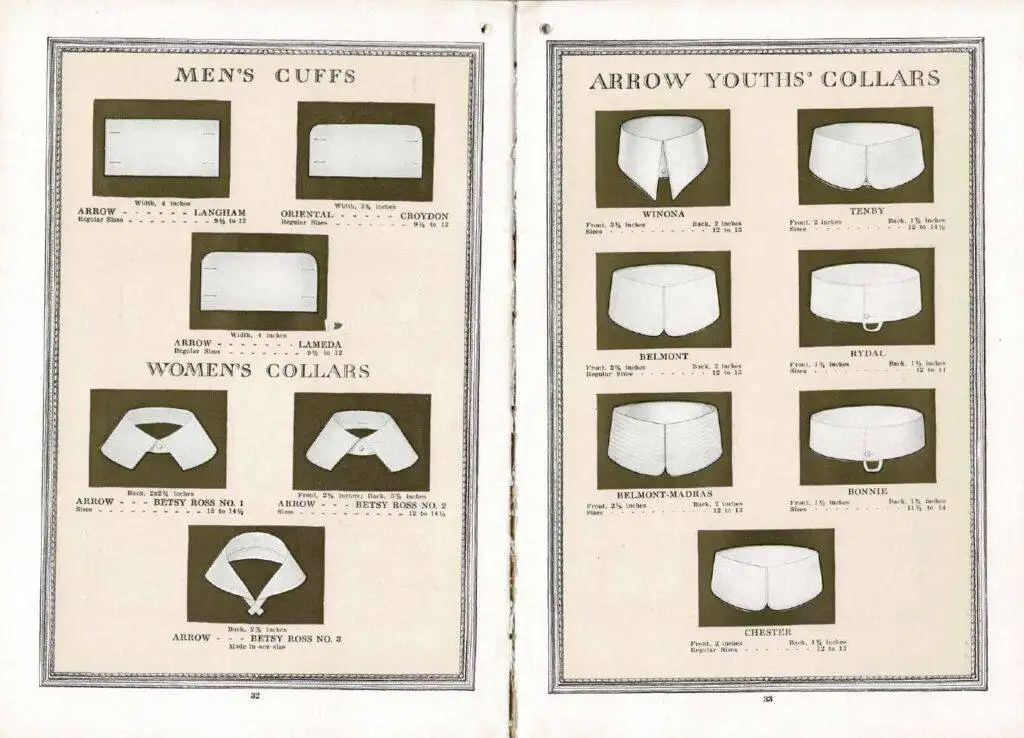
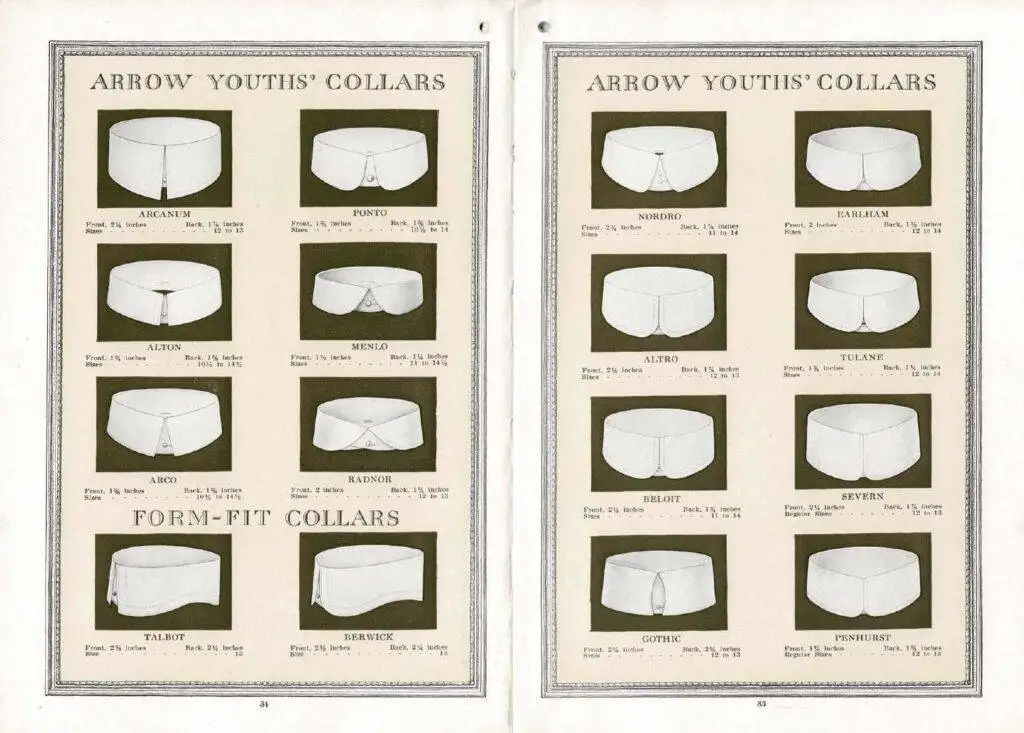

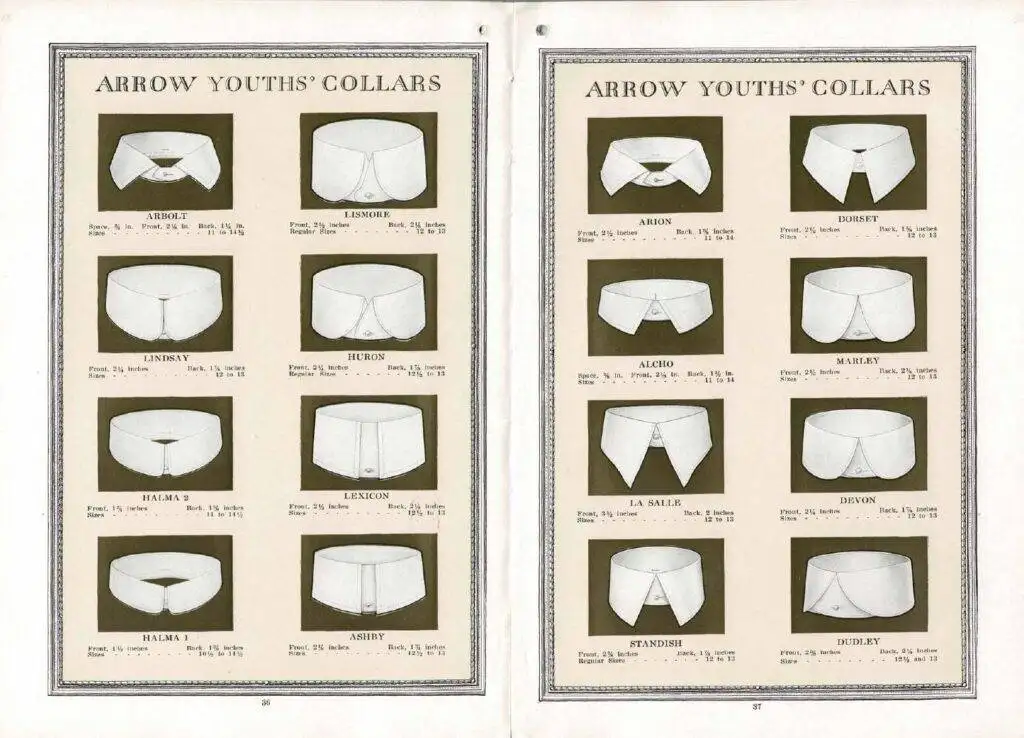
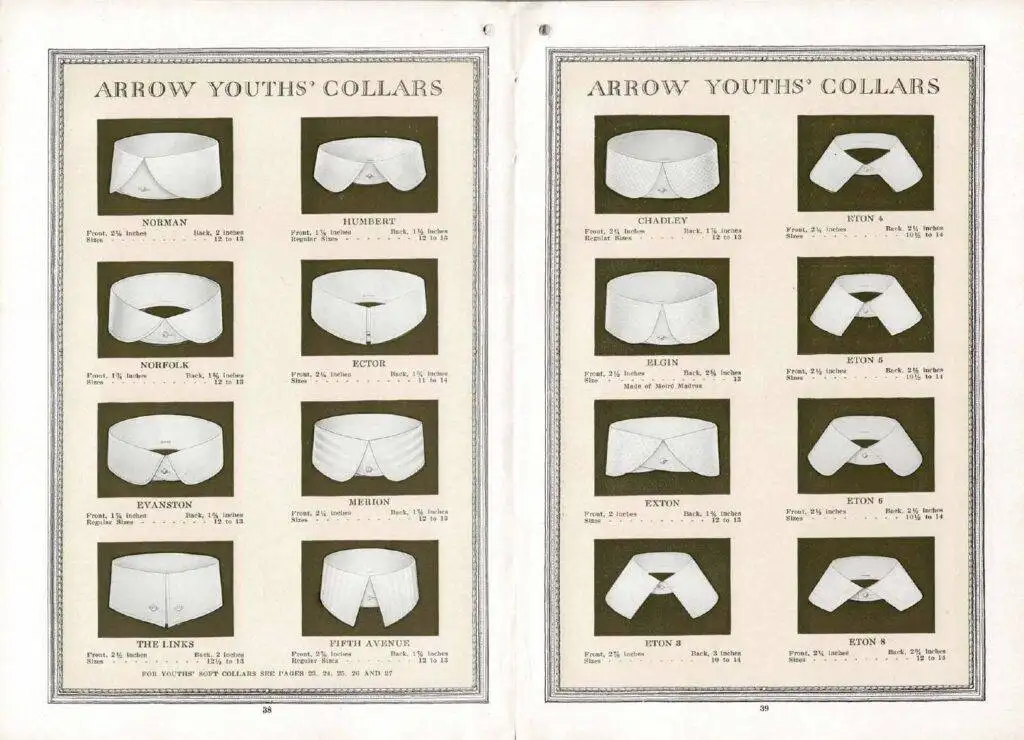
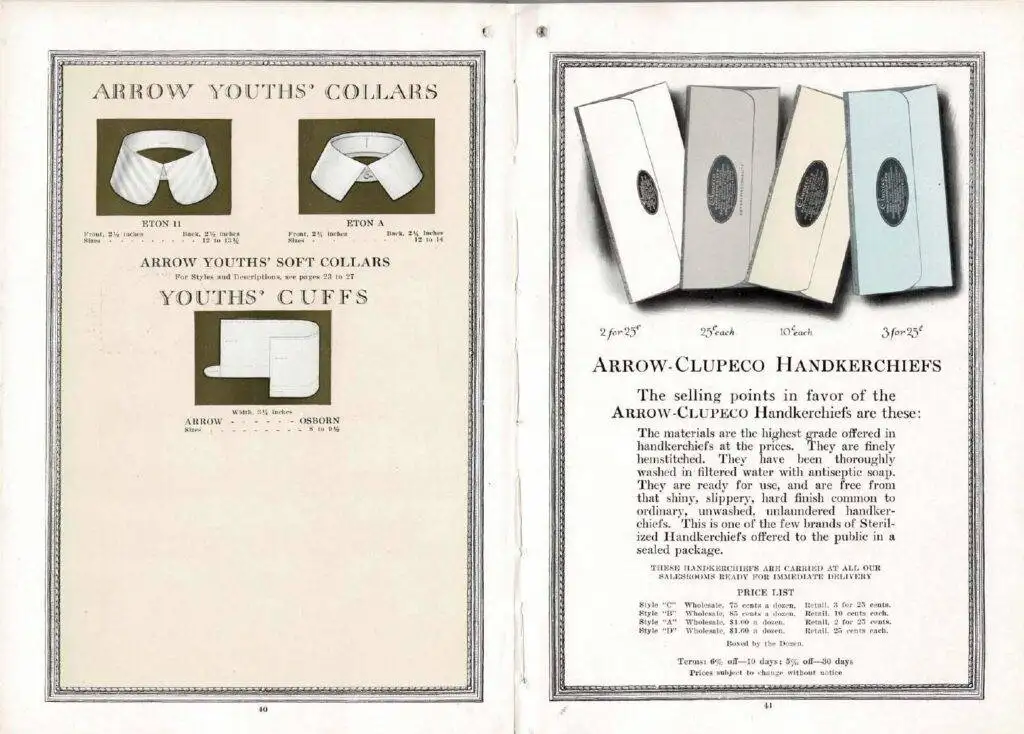

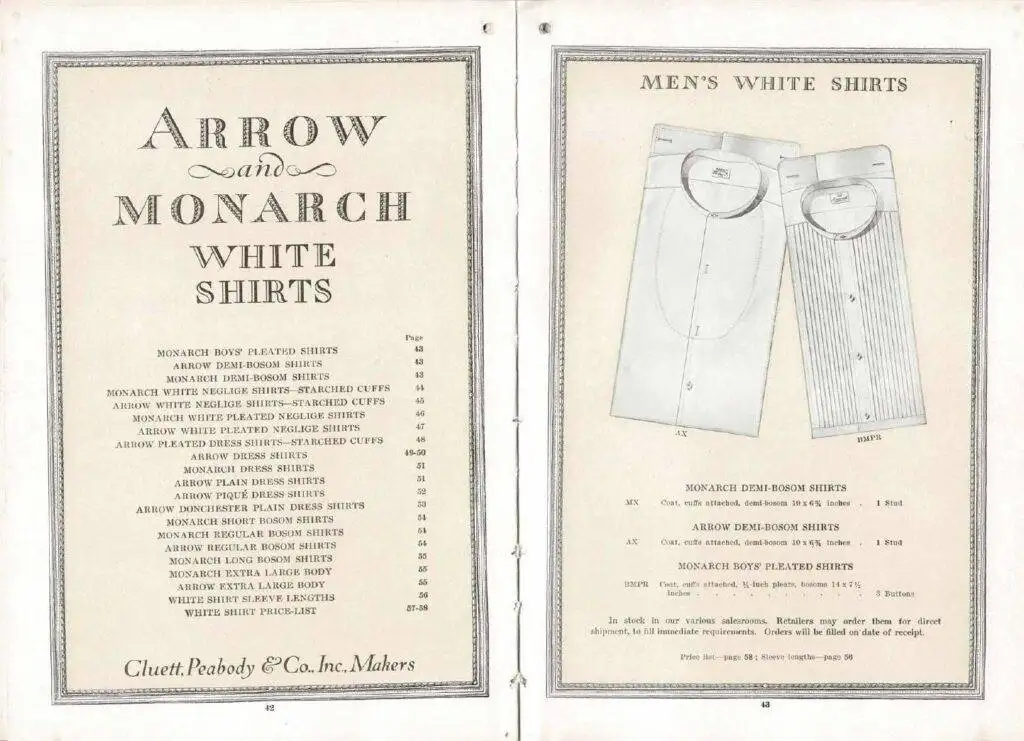
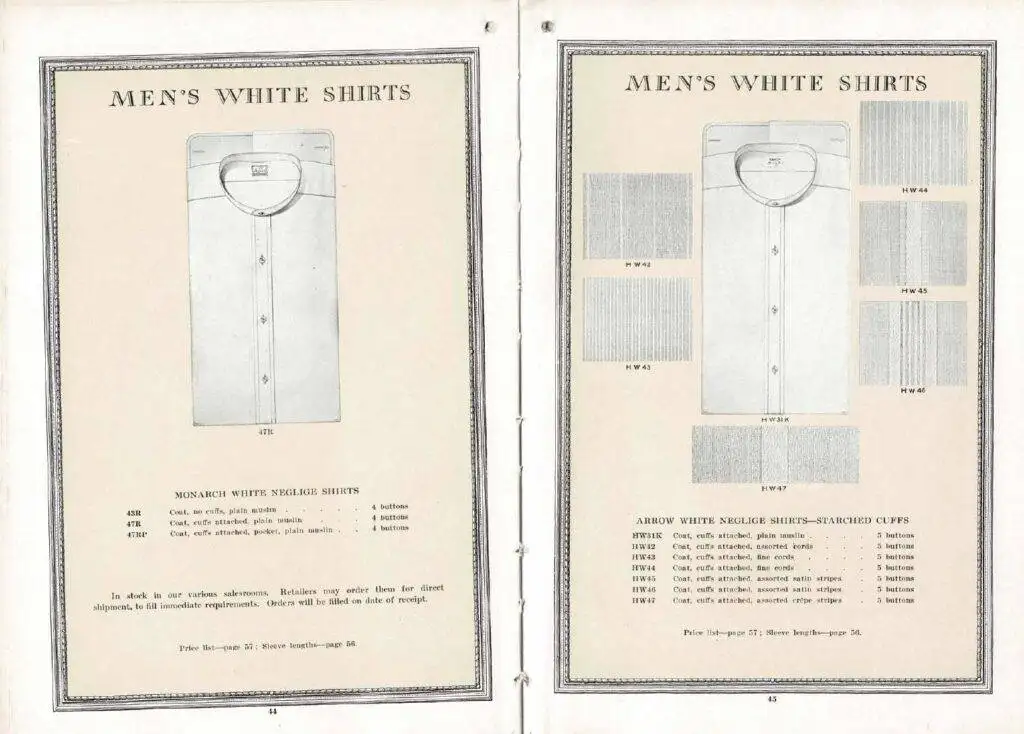
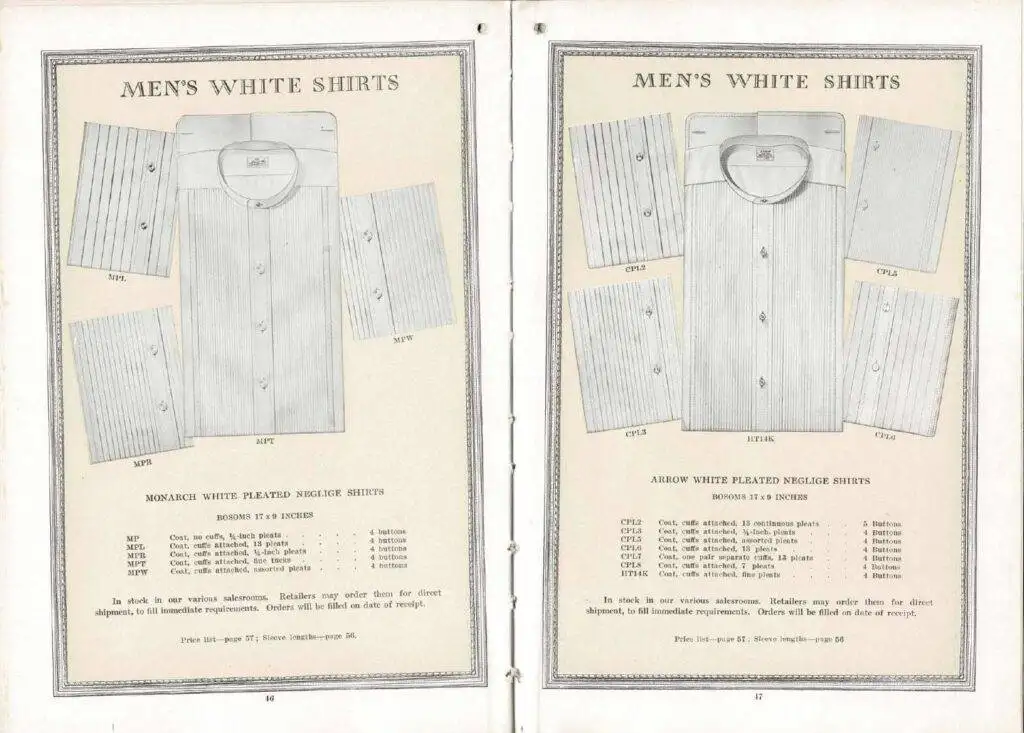

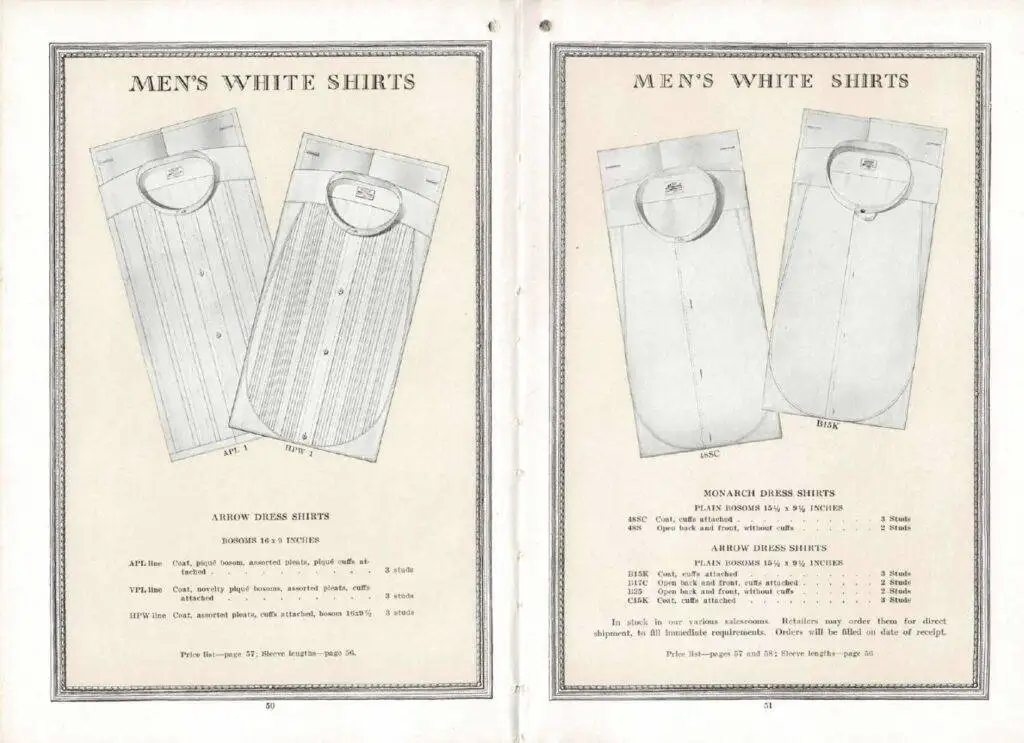
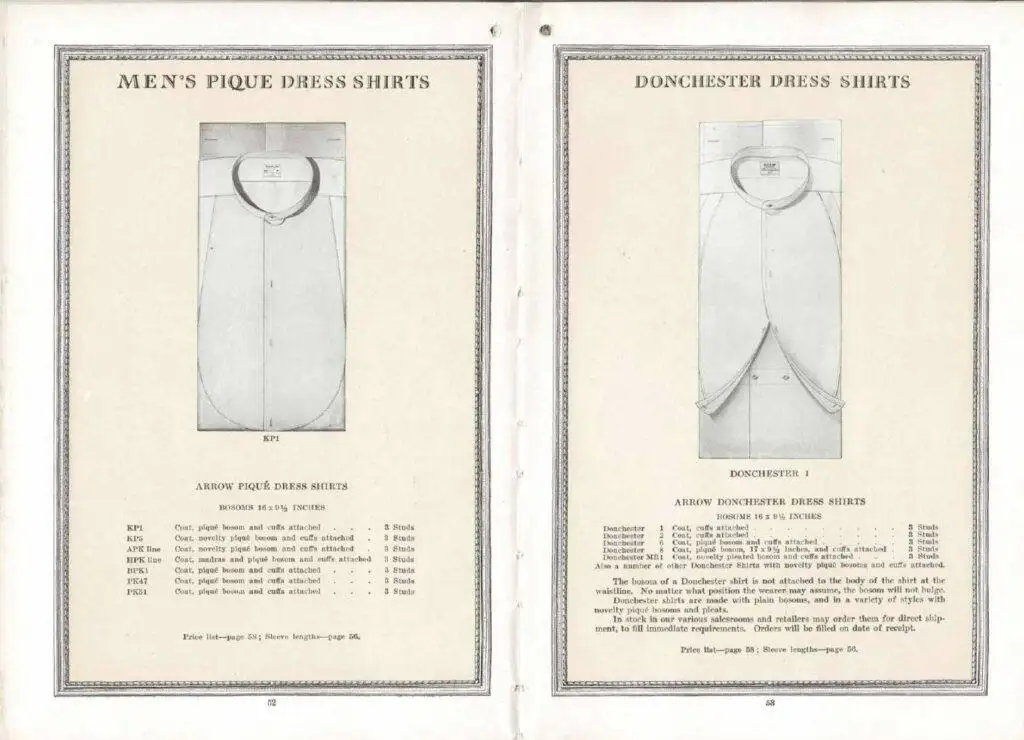

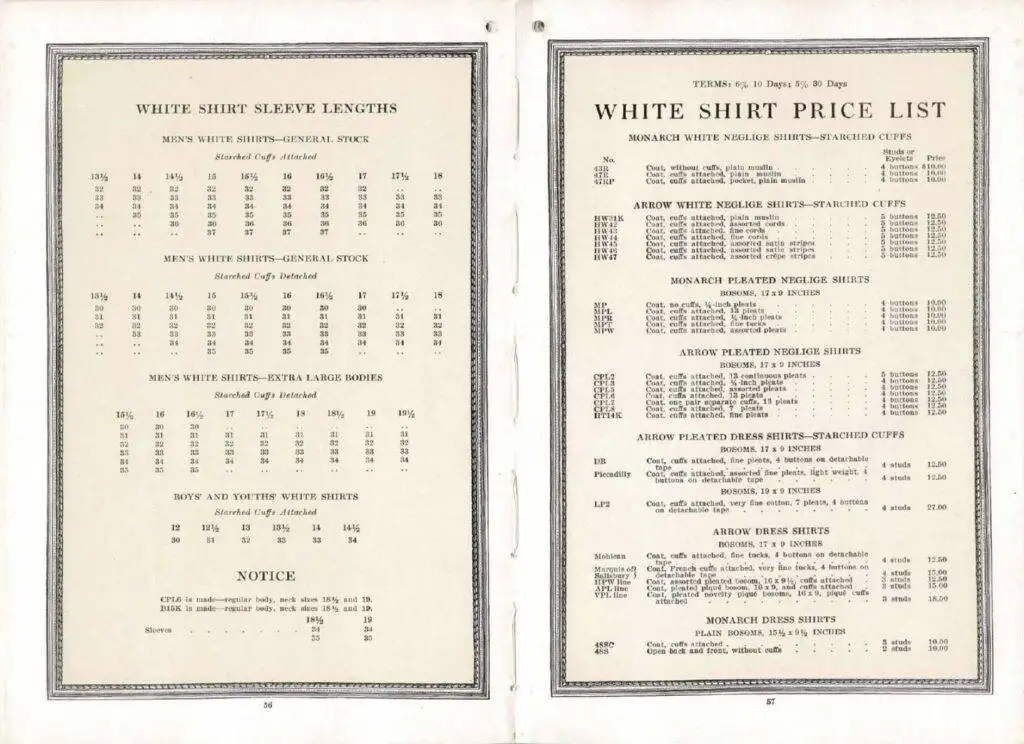
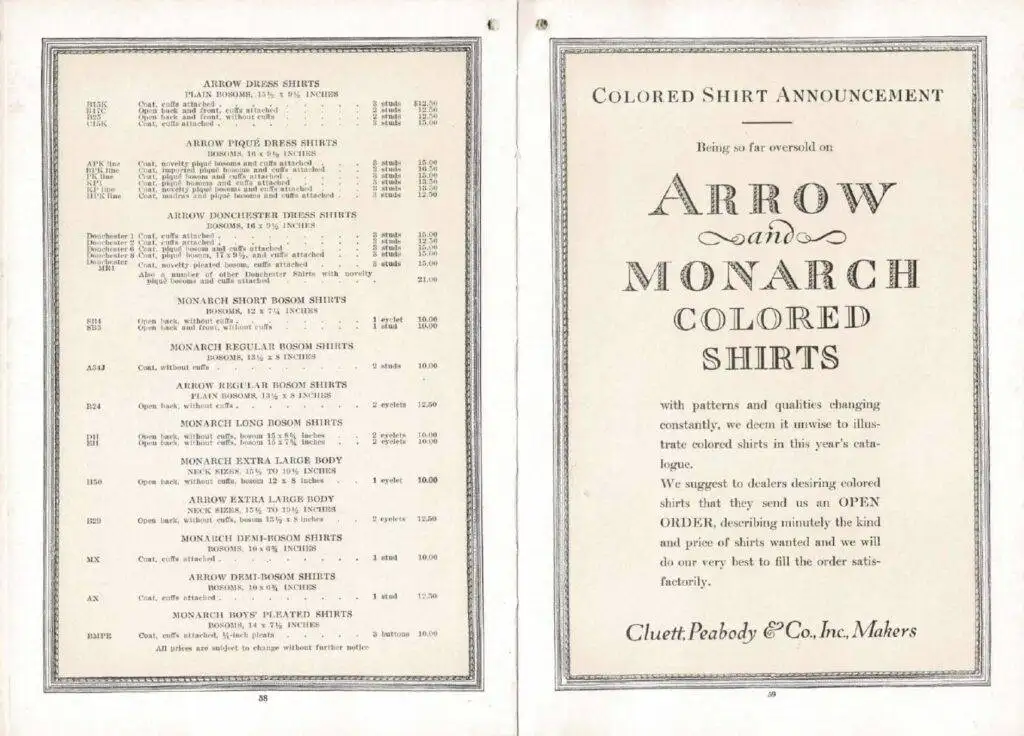


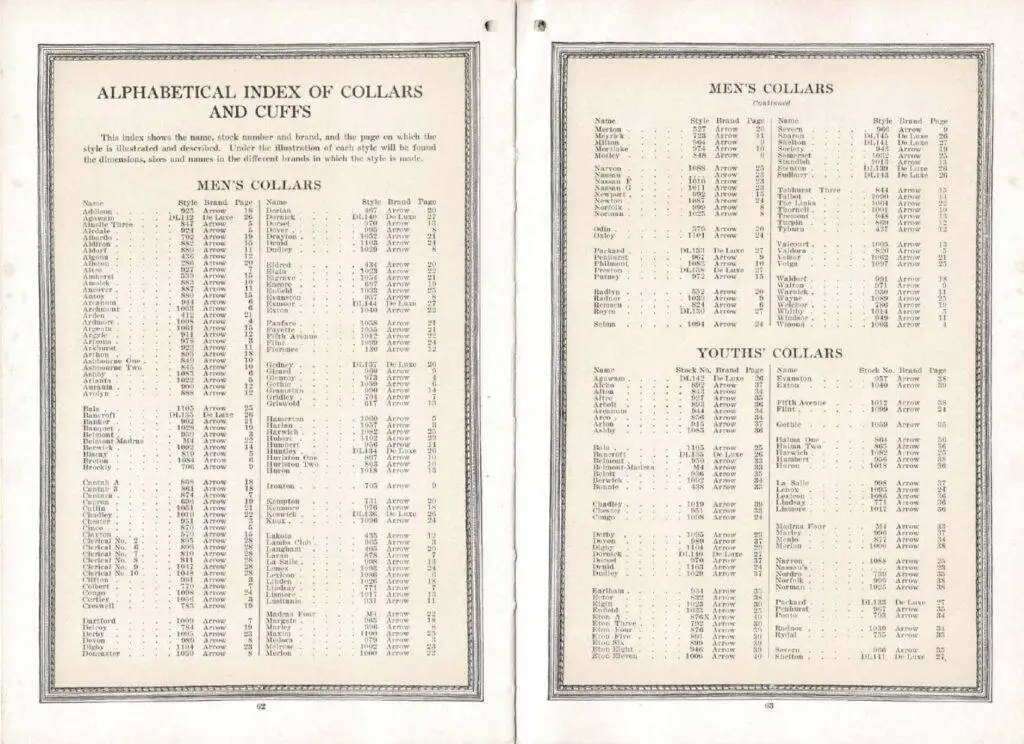

1917 the Arrow shirt style book

1919 JC Leyendecker Cluett Peabody Troy NY Arrow Moustache
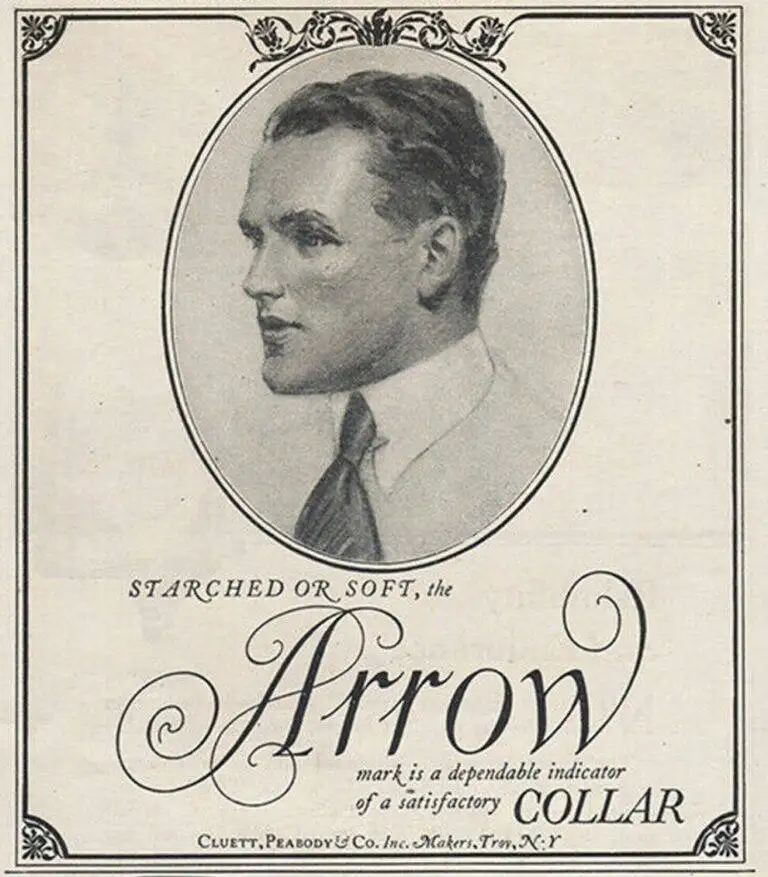
1919 Arrow Shirt Collar
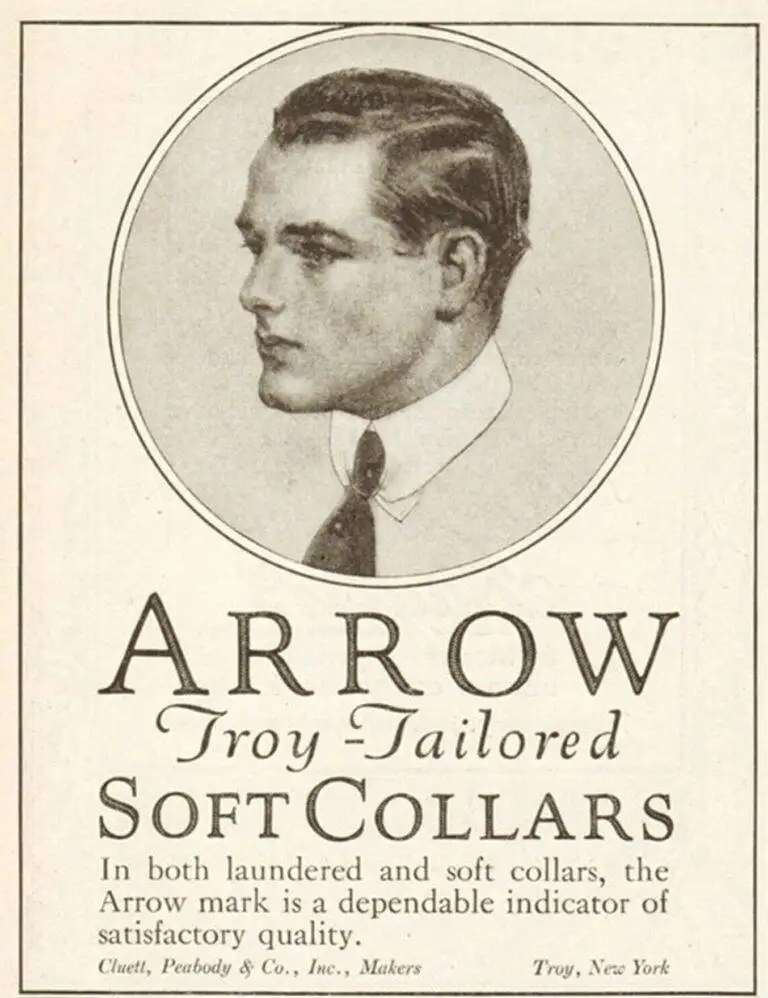
1919 Cluett Peabody Co Troy NY Arrow Soft Collar Men’s Fashion Style
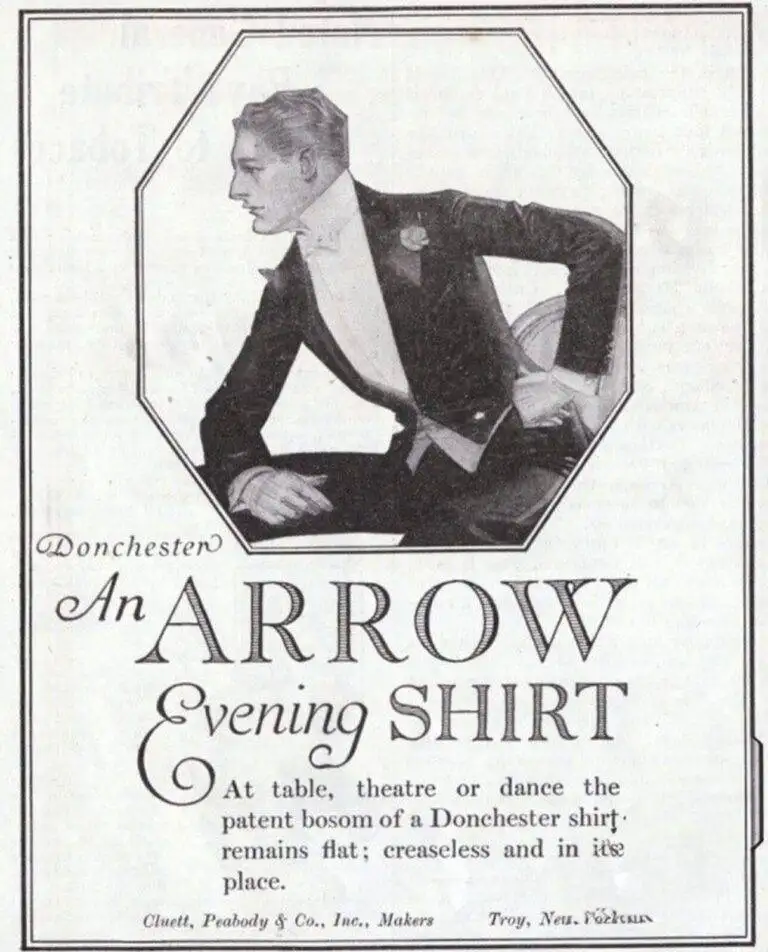
1919 J.C. Leyendecker man art Arrow Donchester evening shirt
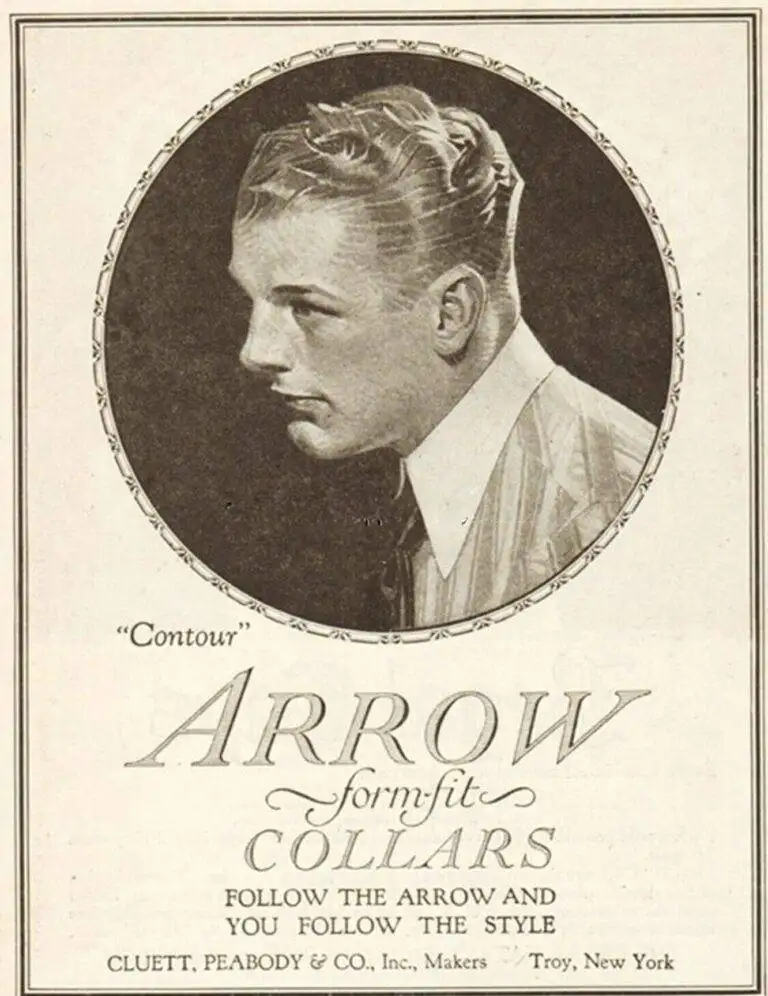
1919 Arrow Shirt Collar
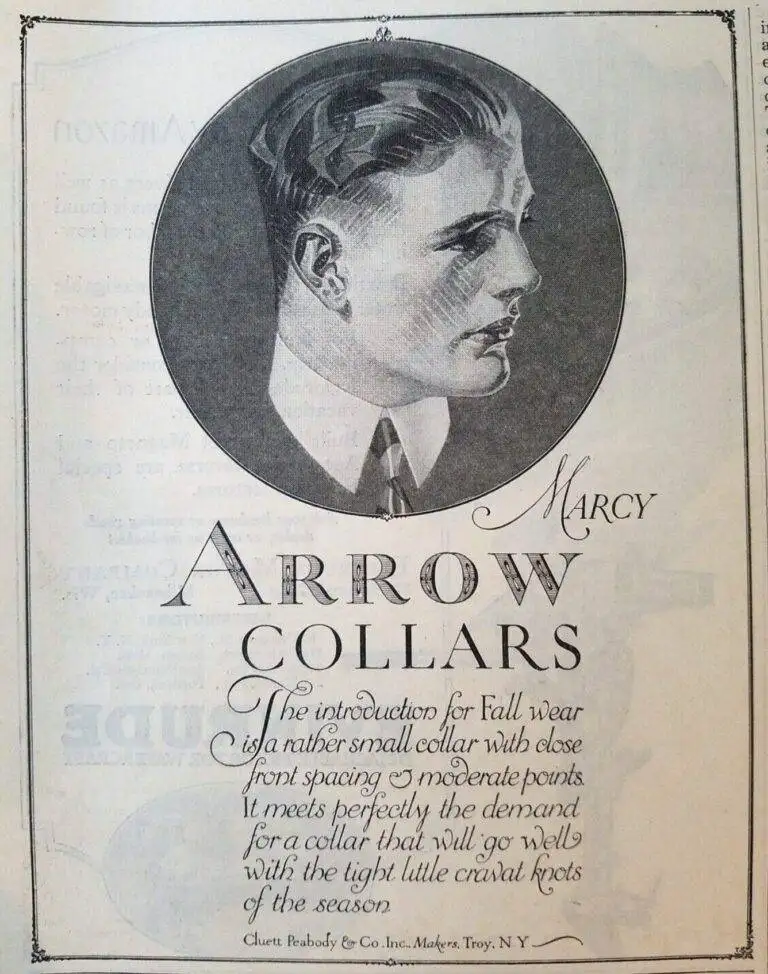
1920 Arrow mens shirt collars Marcy style
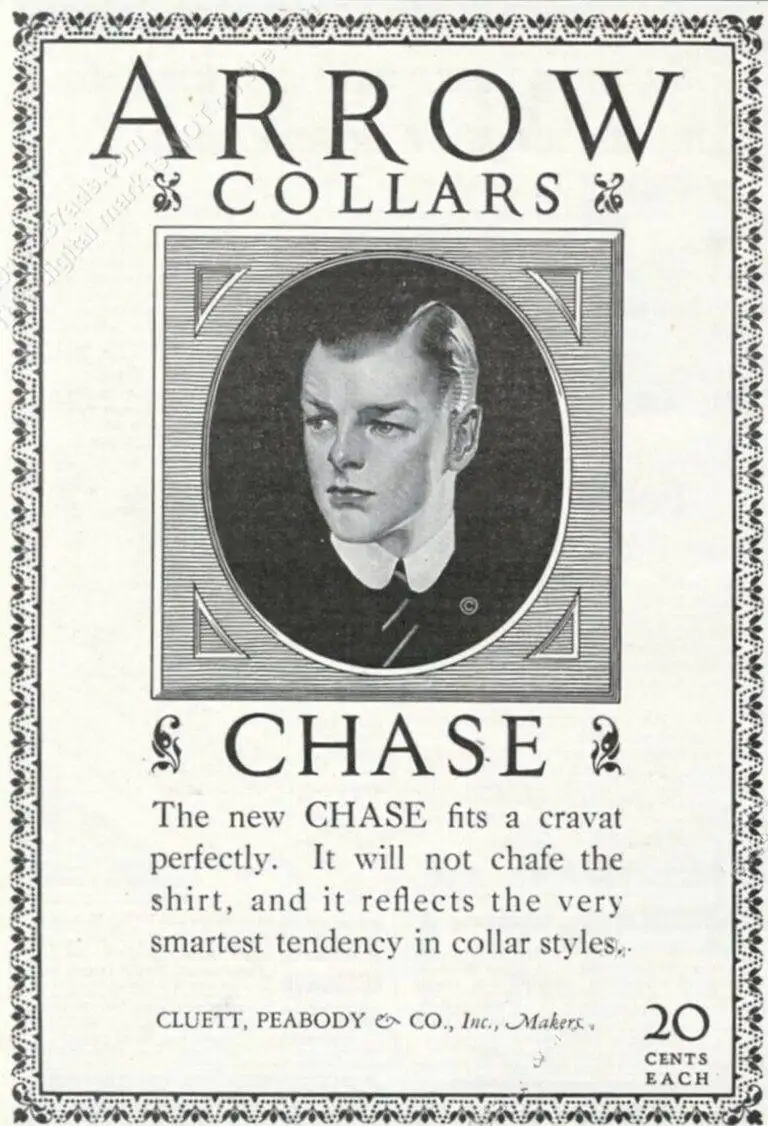
1923 Arrow shirt collar J.C. Leyendecker young man

1924 Print Ad Arrow Shirts

1929 Print Ad Arrow Shirts
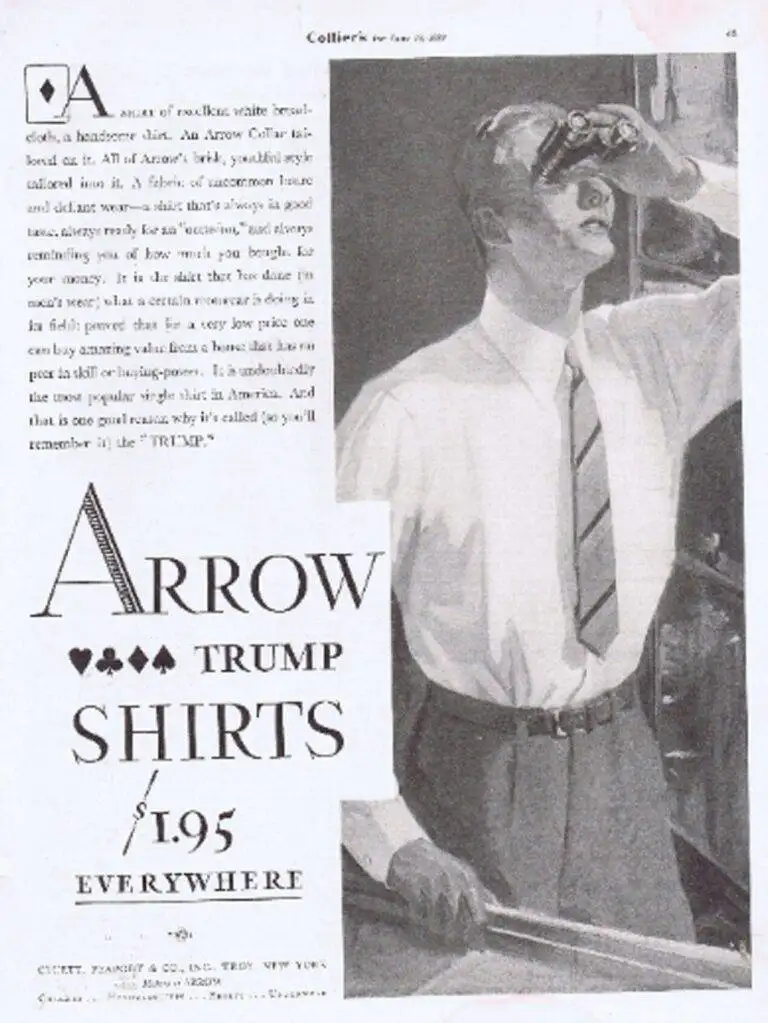
1929 Print Ad Arrow Shirts
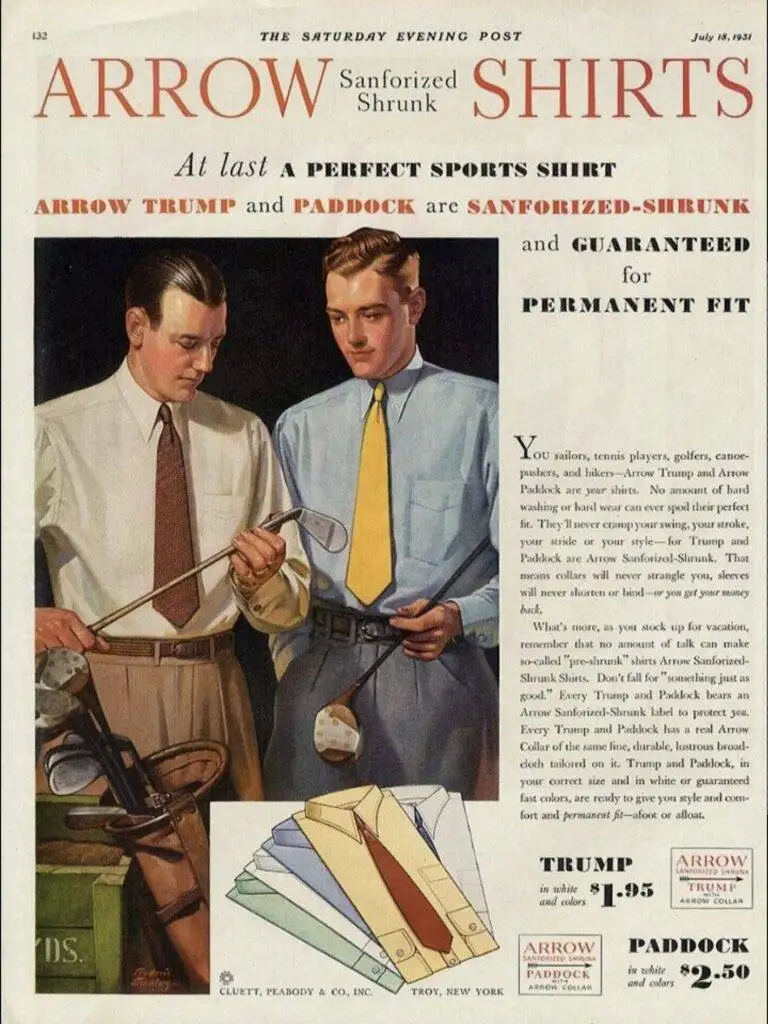
ARROW SHIRTS Fashion Ad 1931
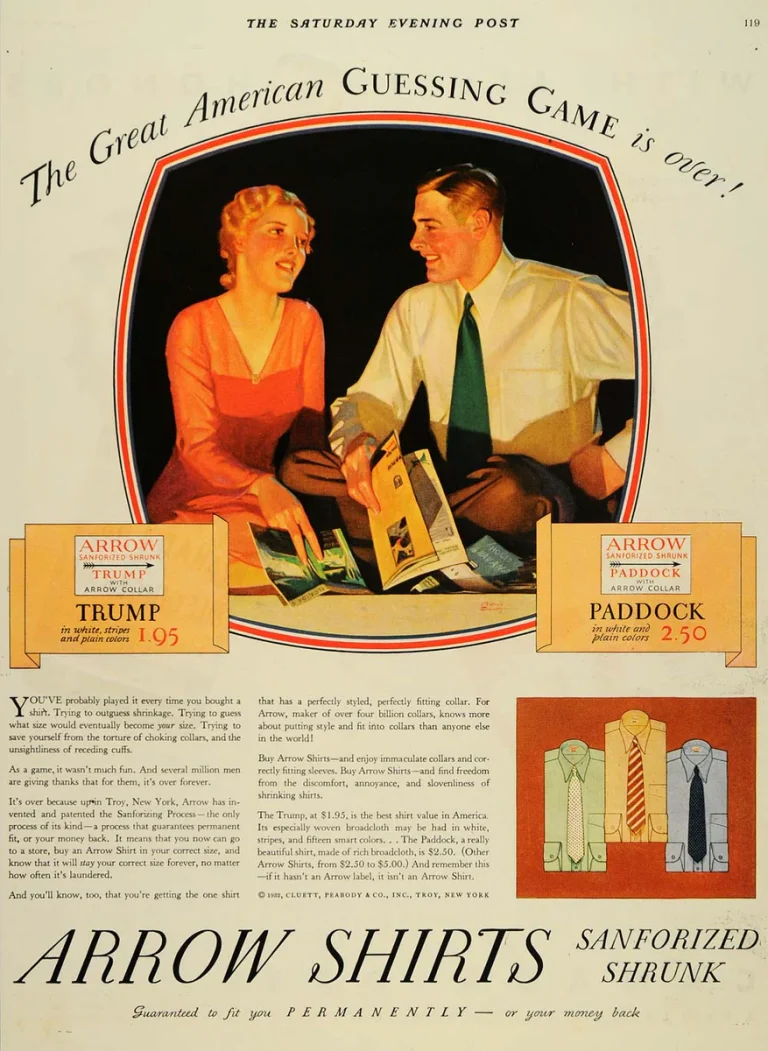
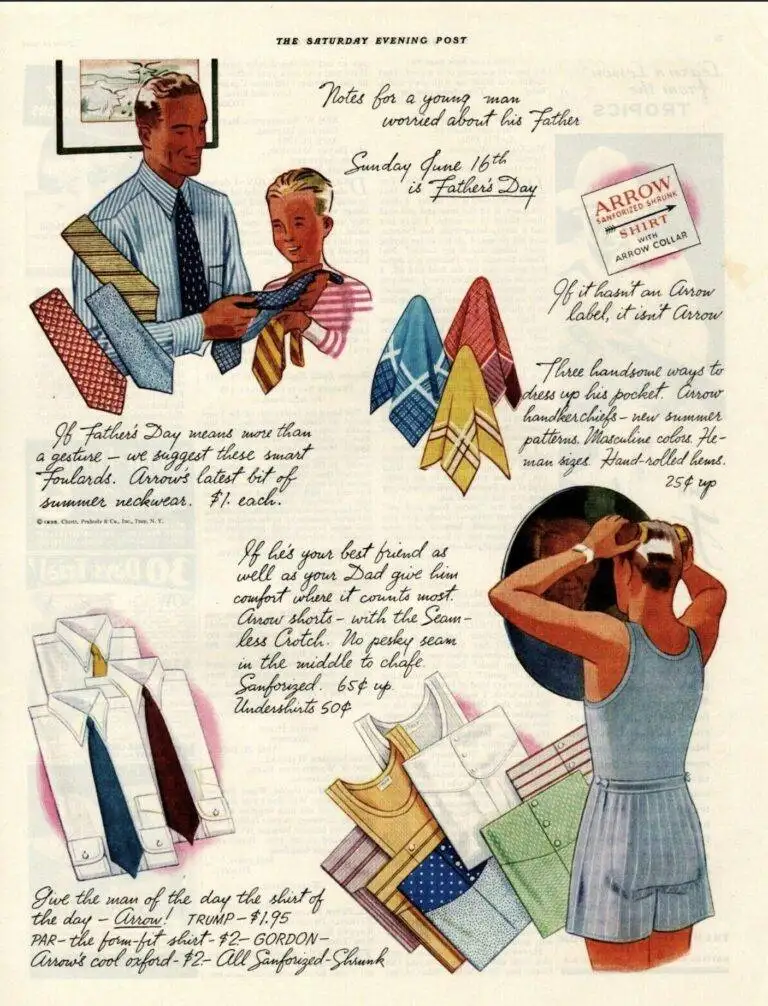
1935 ORIGINAL VINTAGE ARROW SHIRT CLOTHING MAGAZINE AD
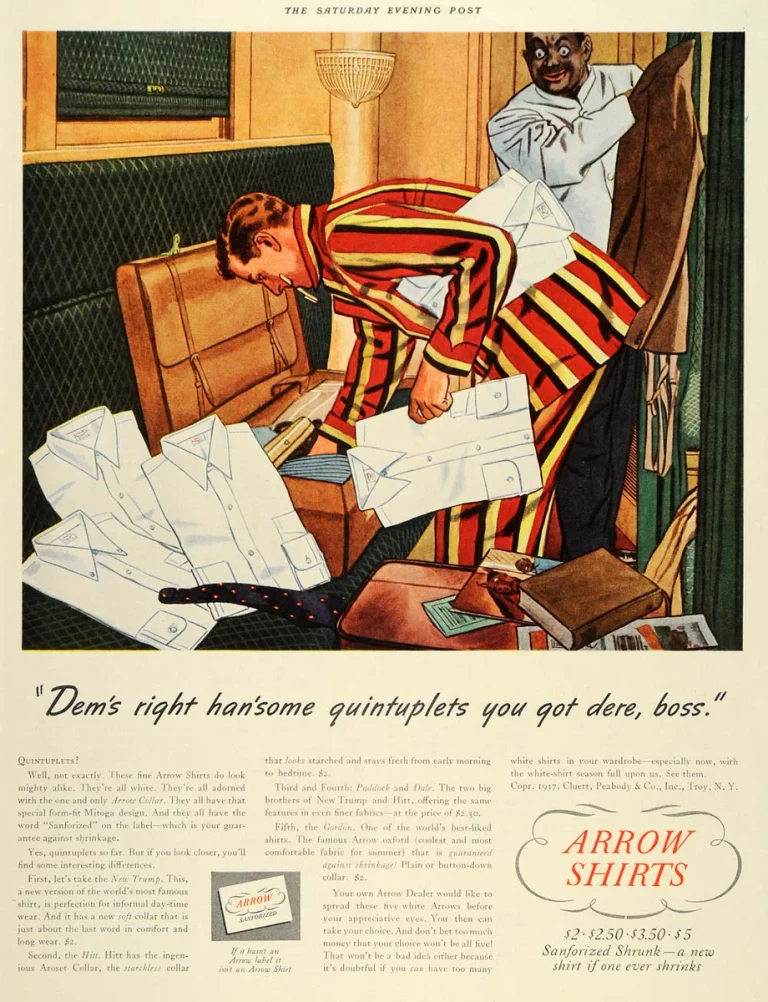
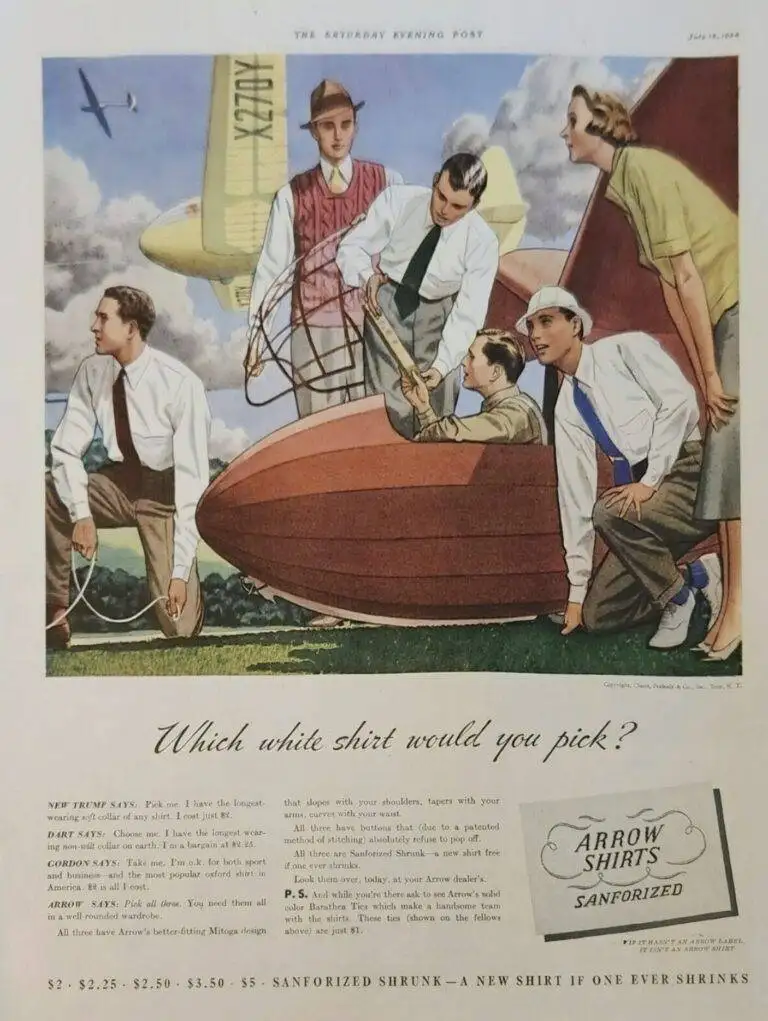
1938 Arrow shirts Sanforized
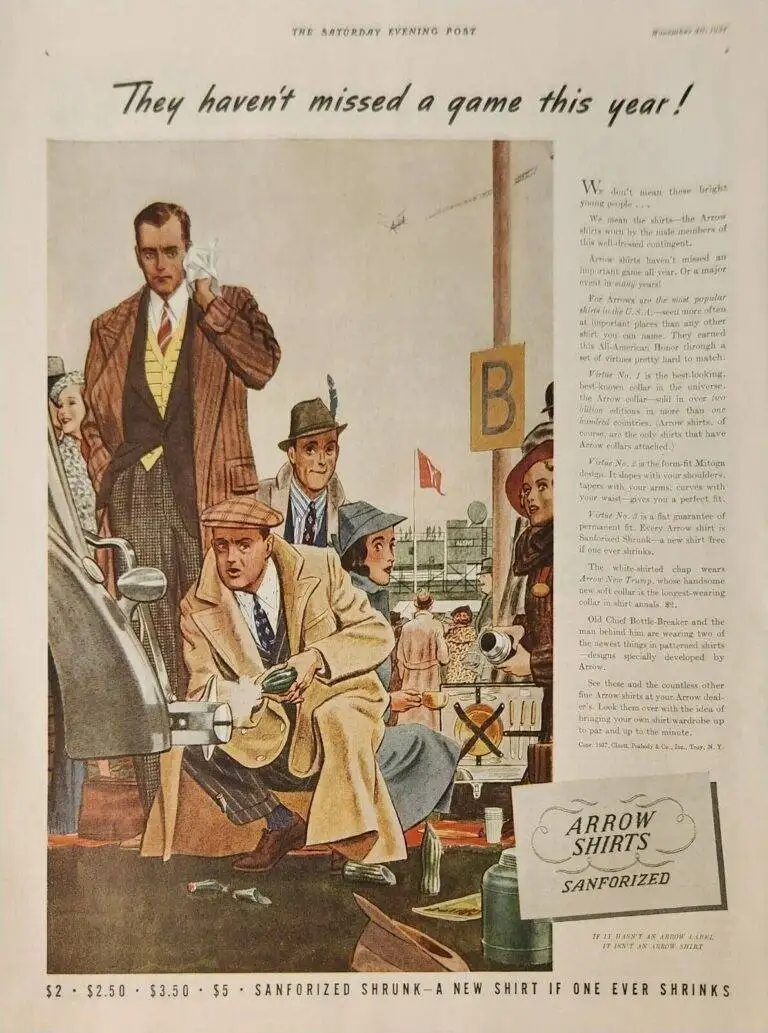
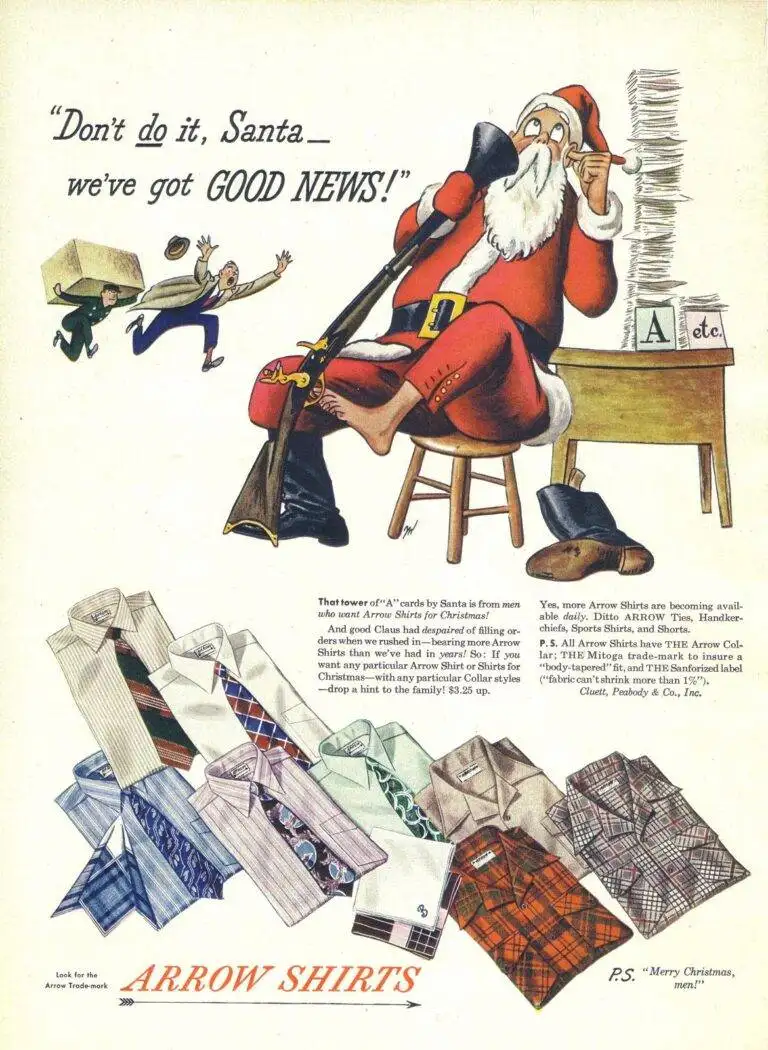
Arrow Shirts, 1947
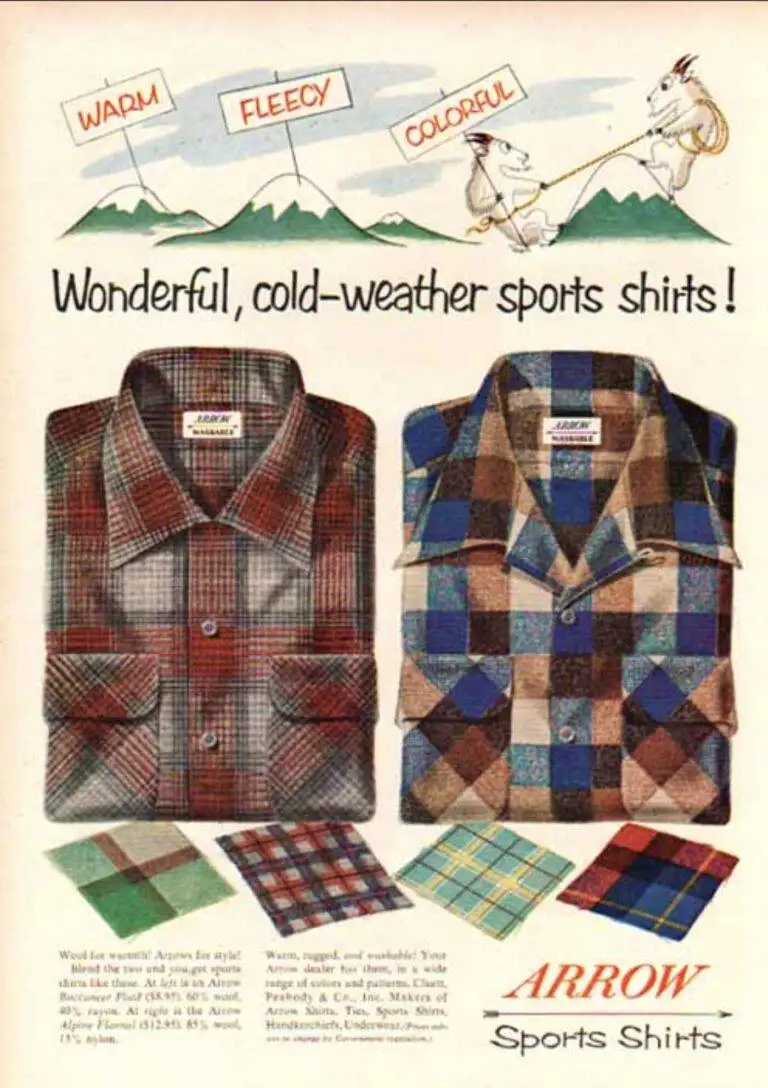
Arrow Shirts, 1947

